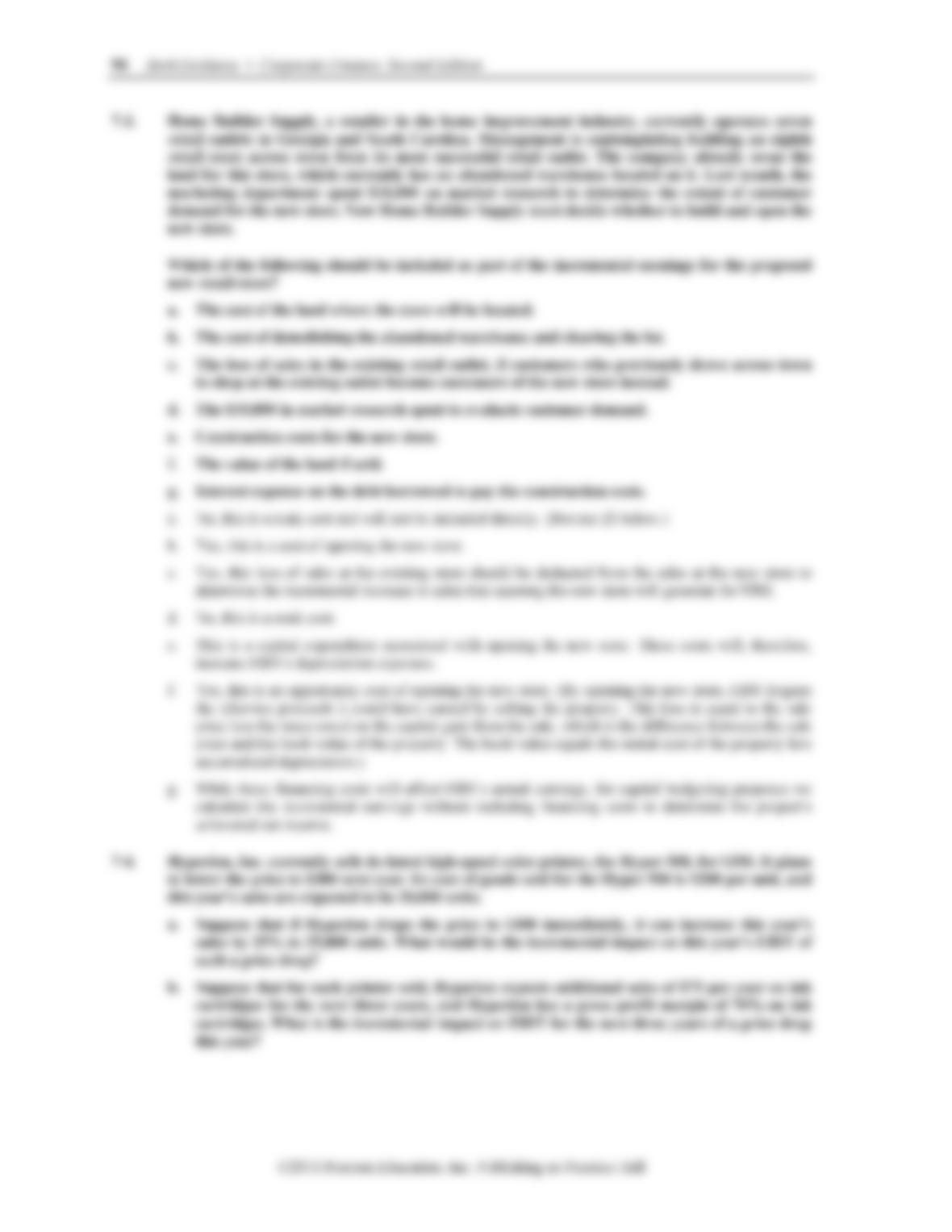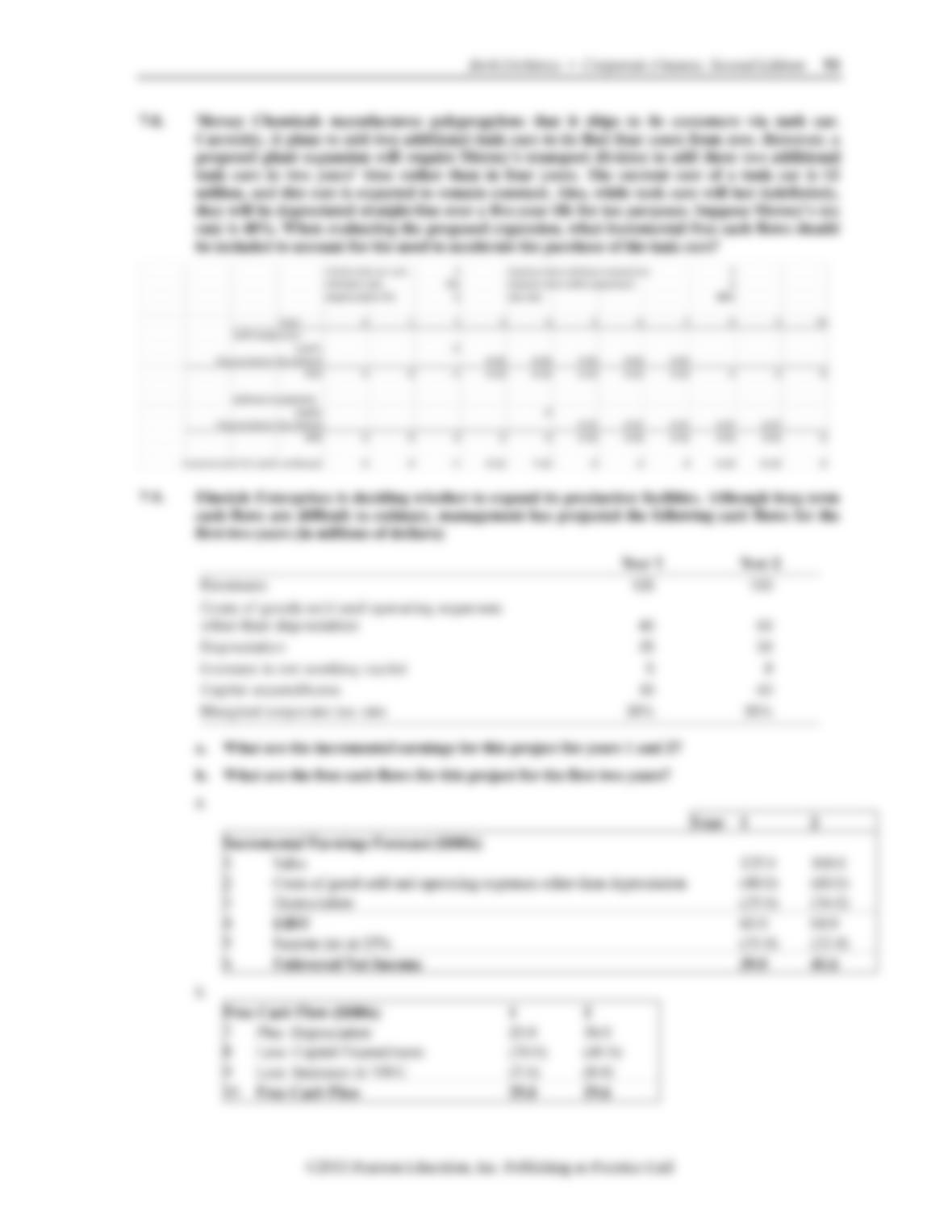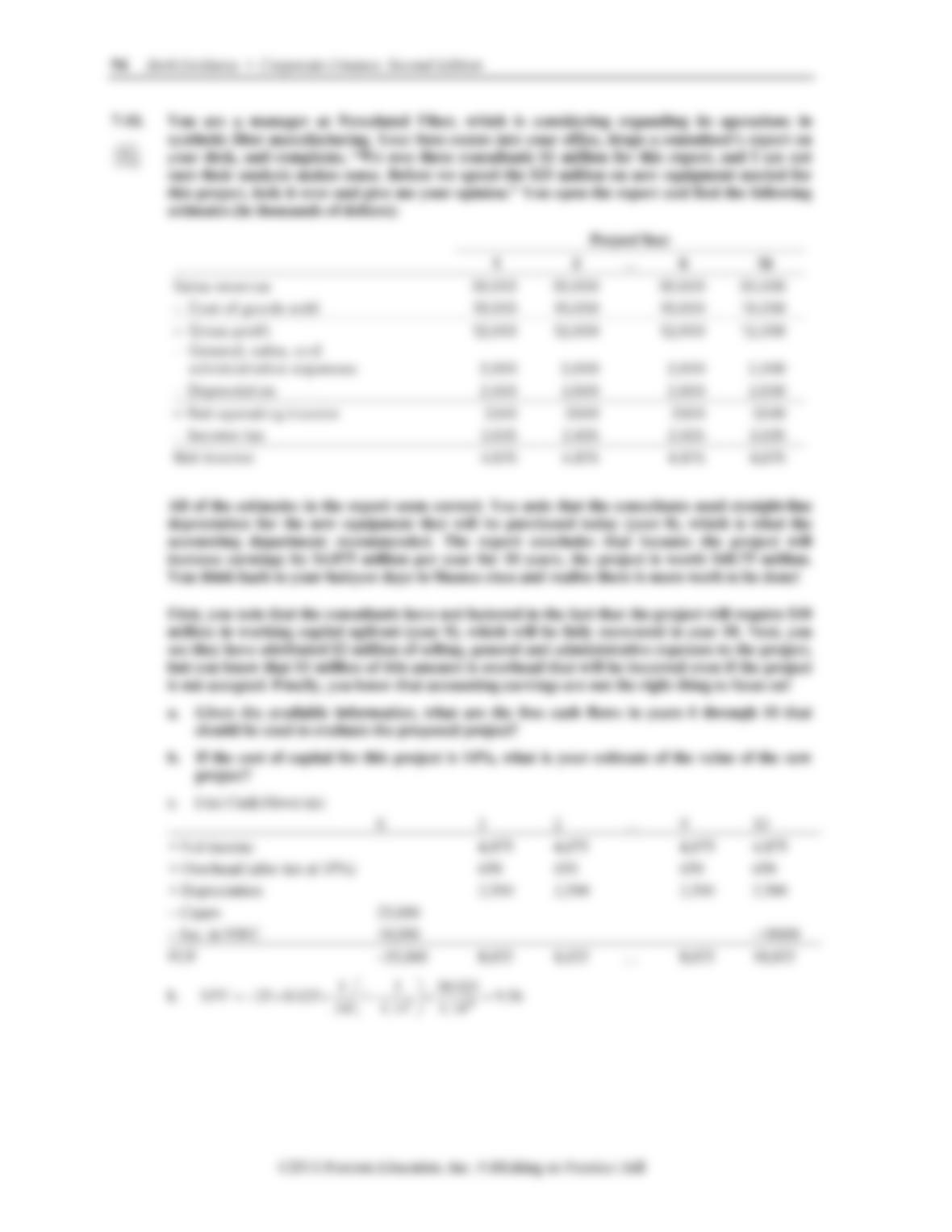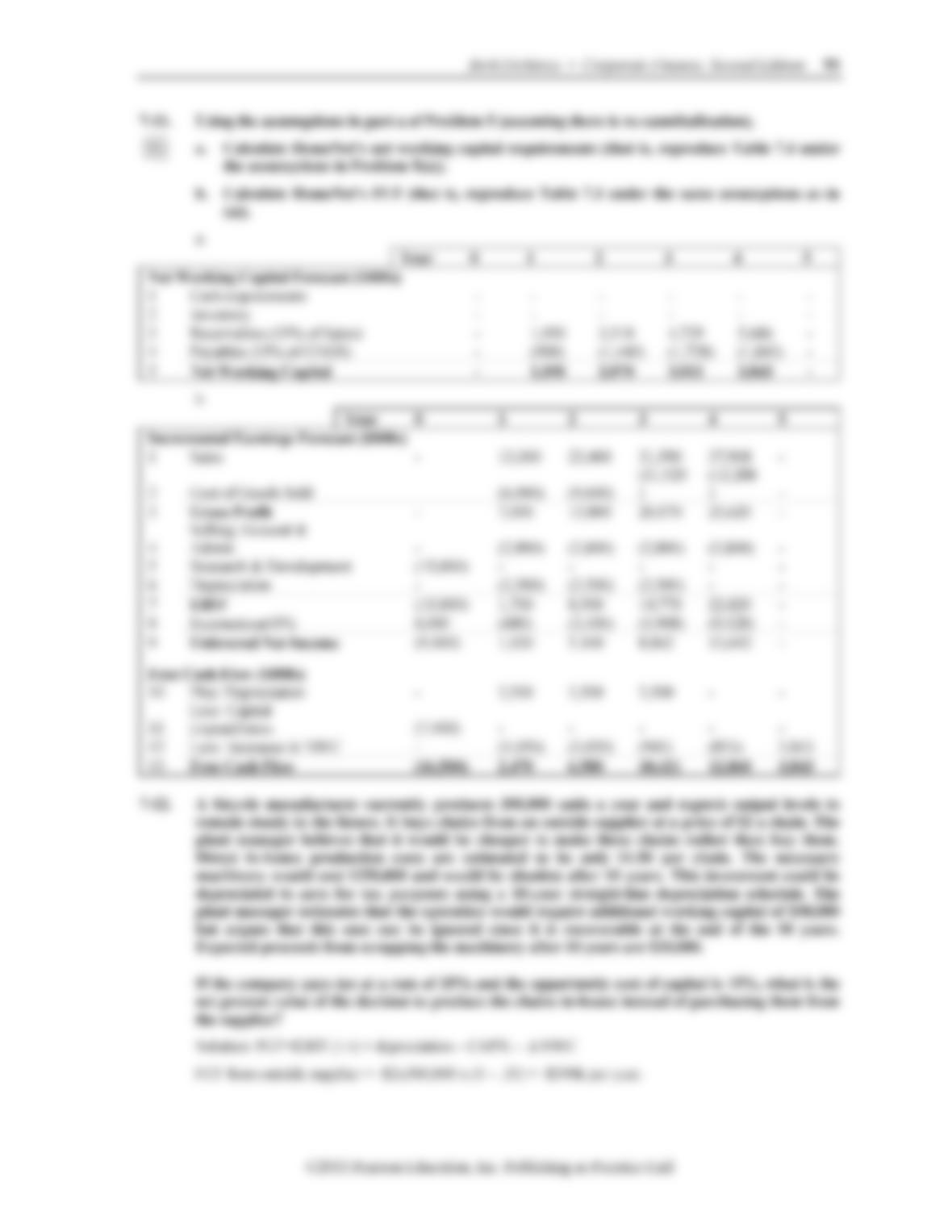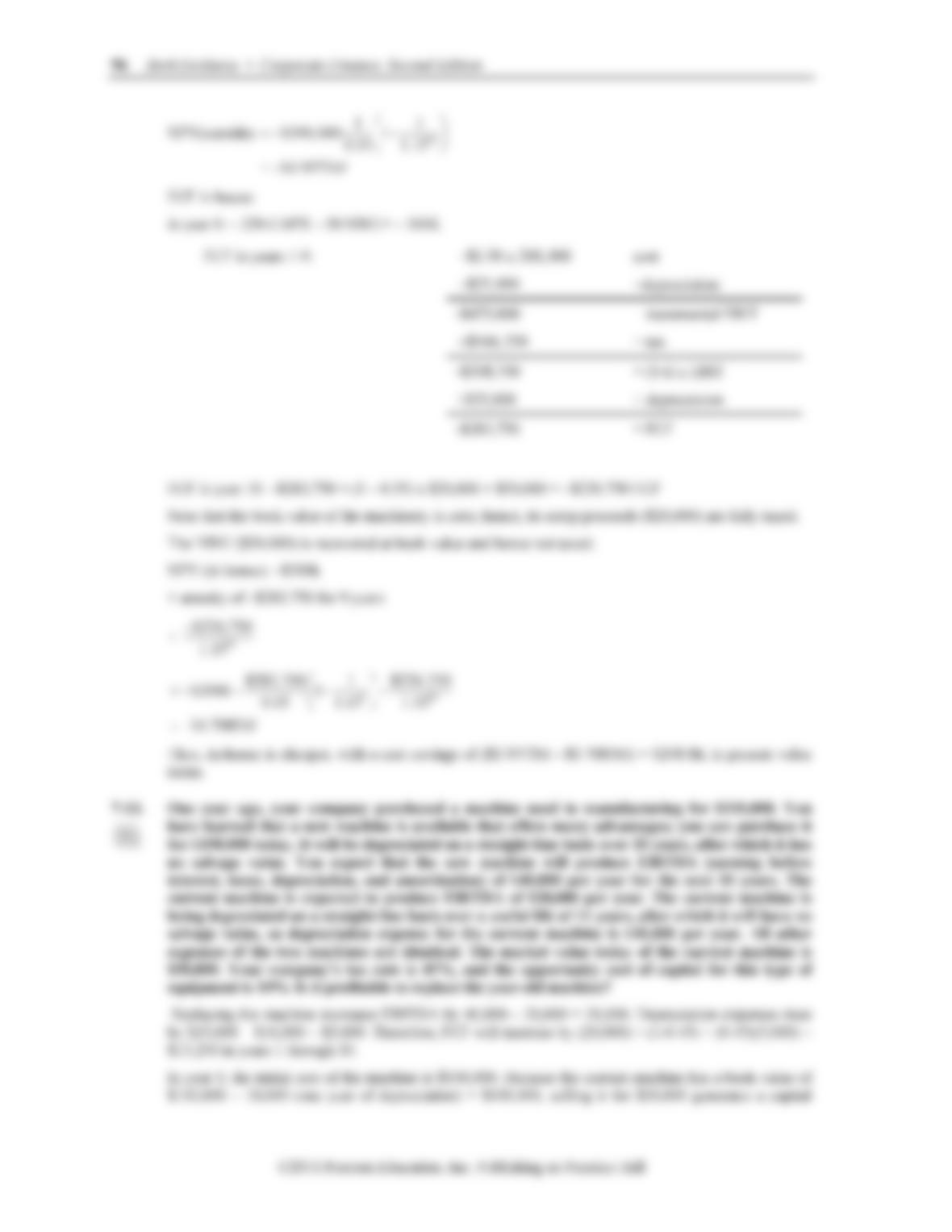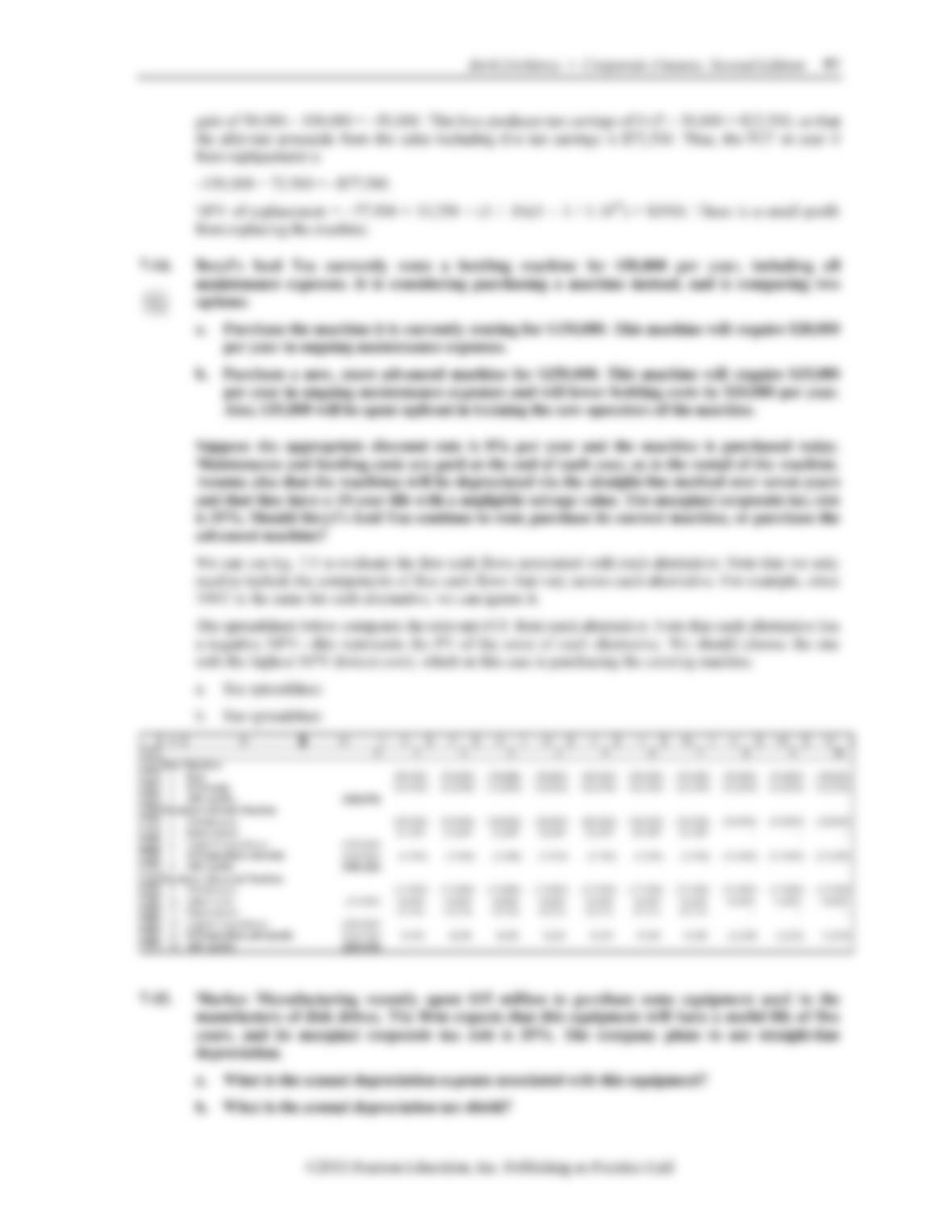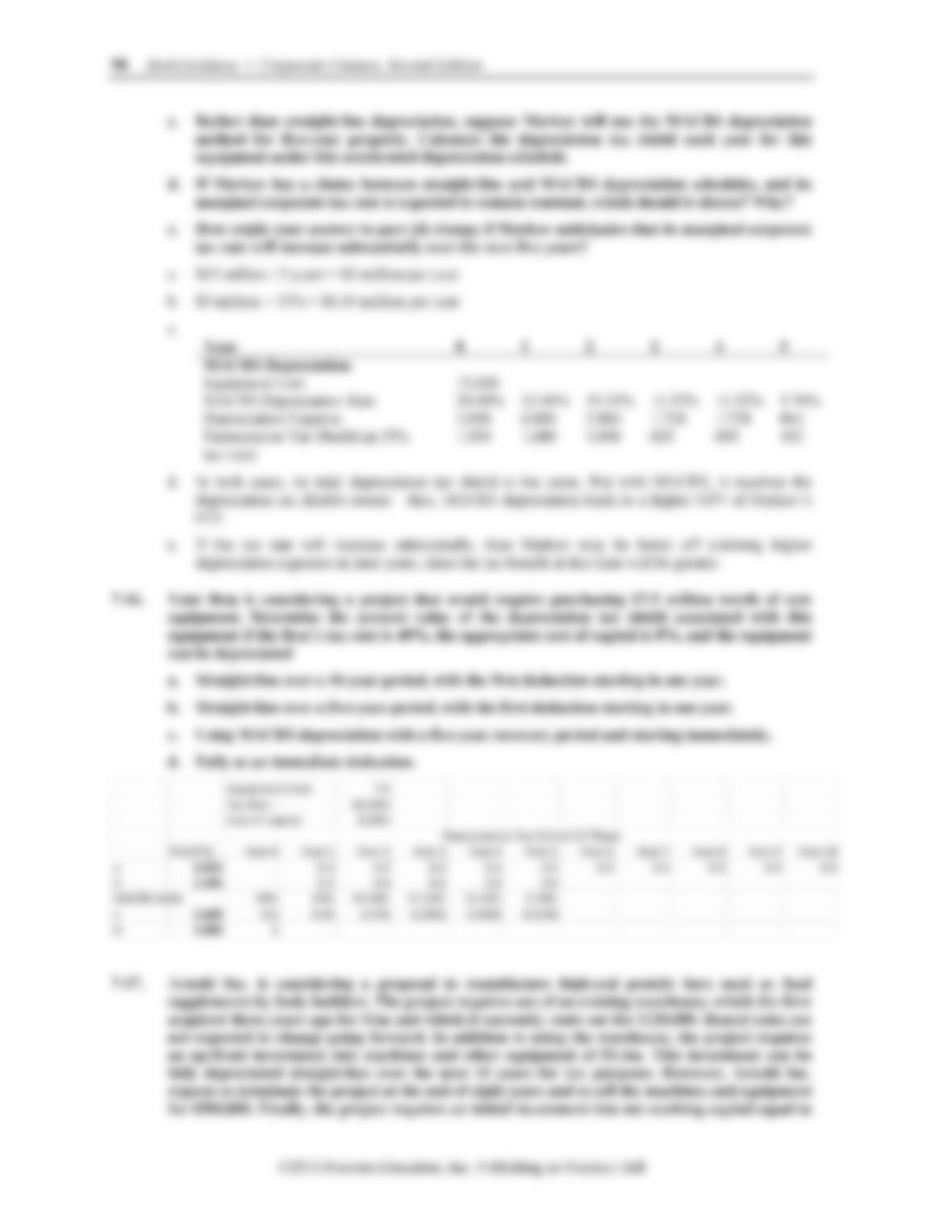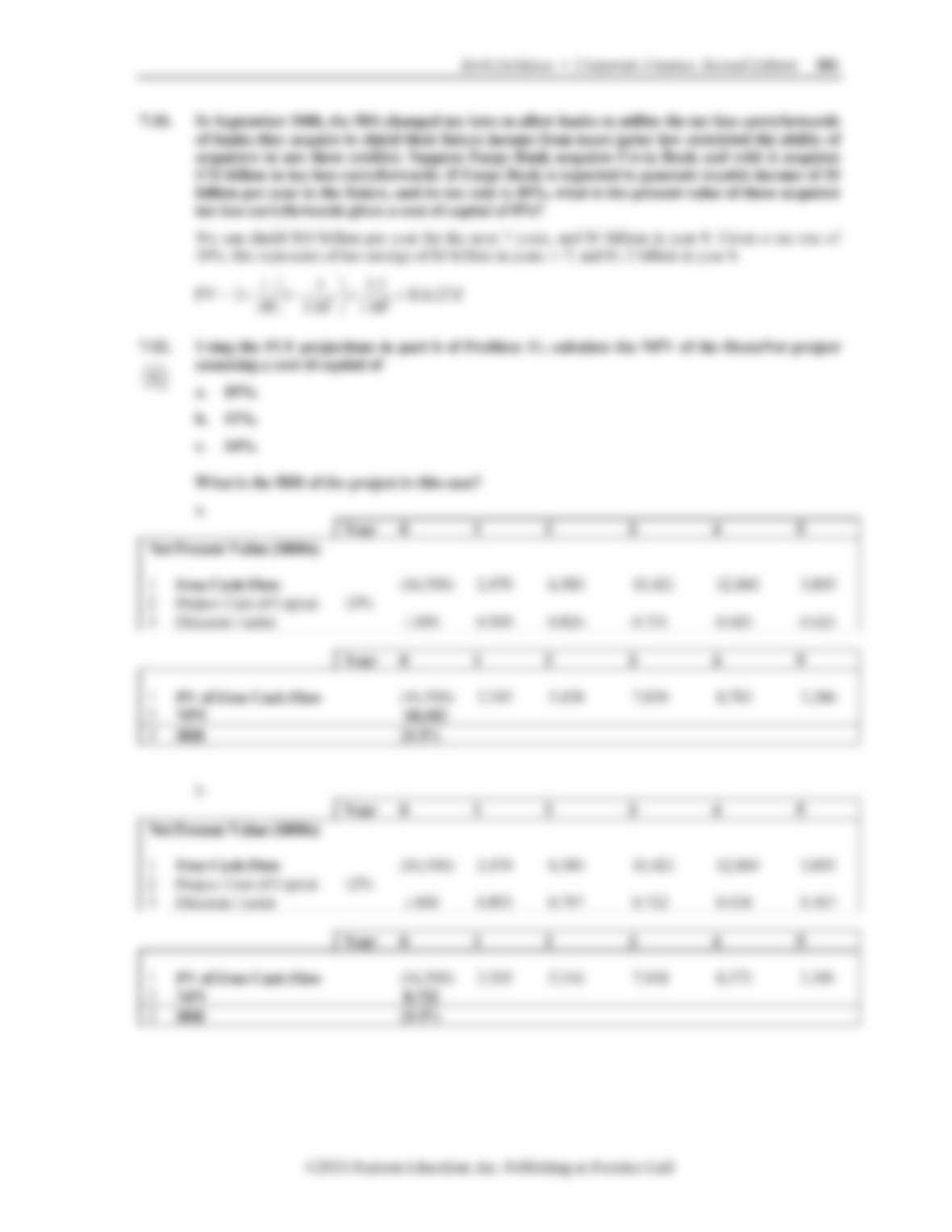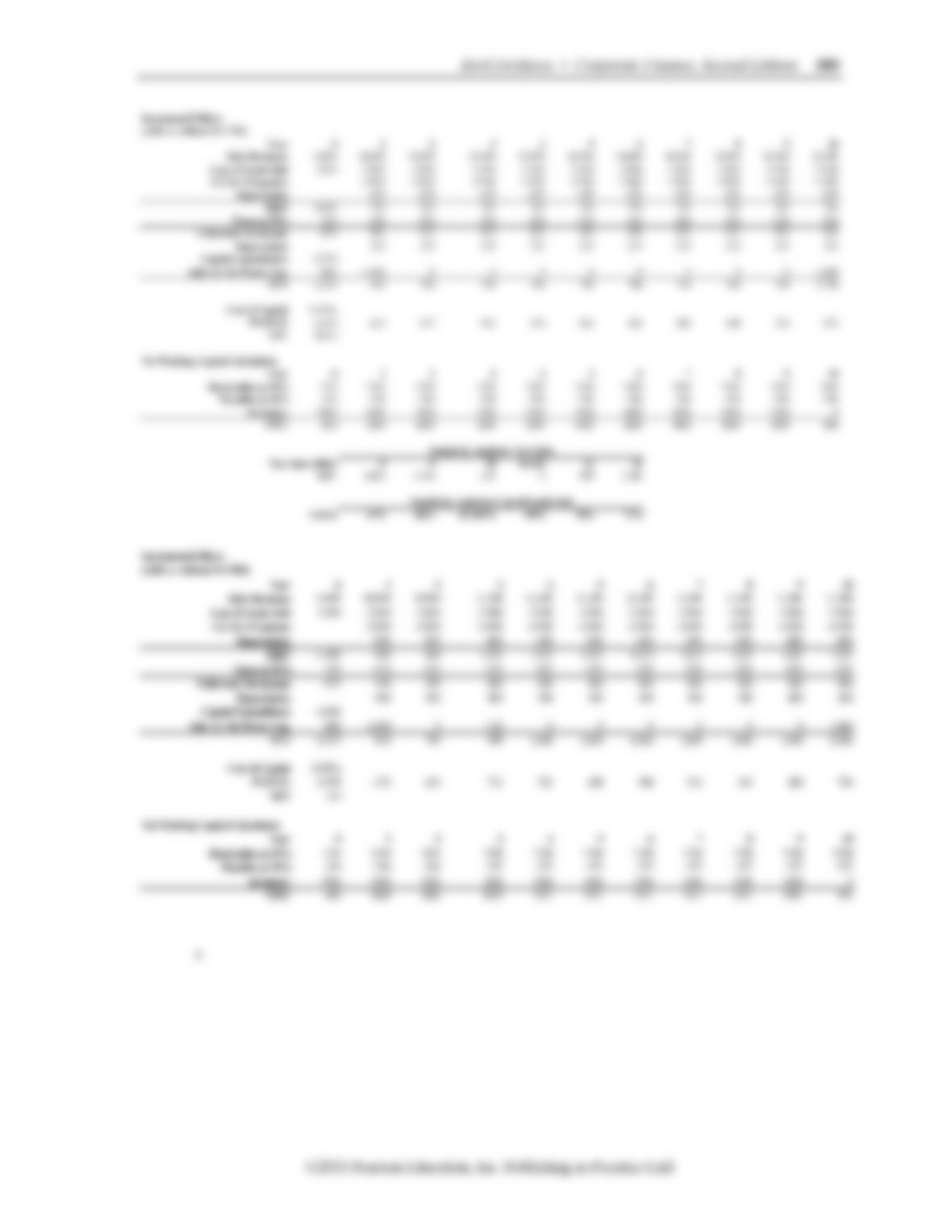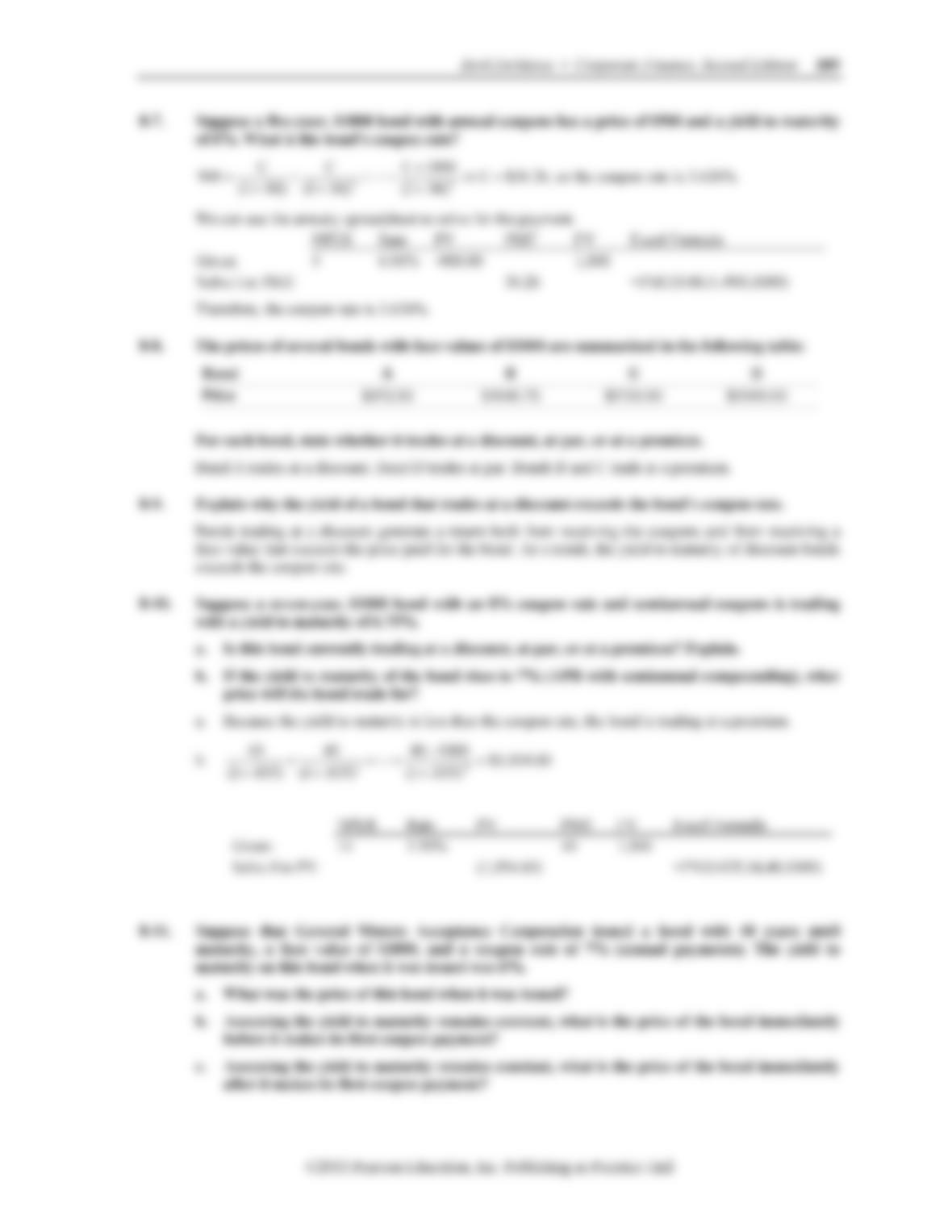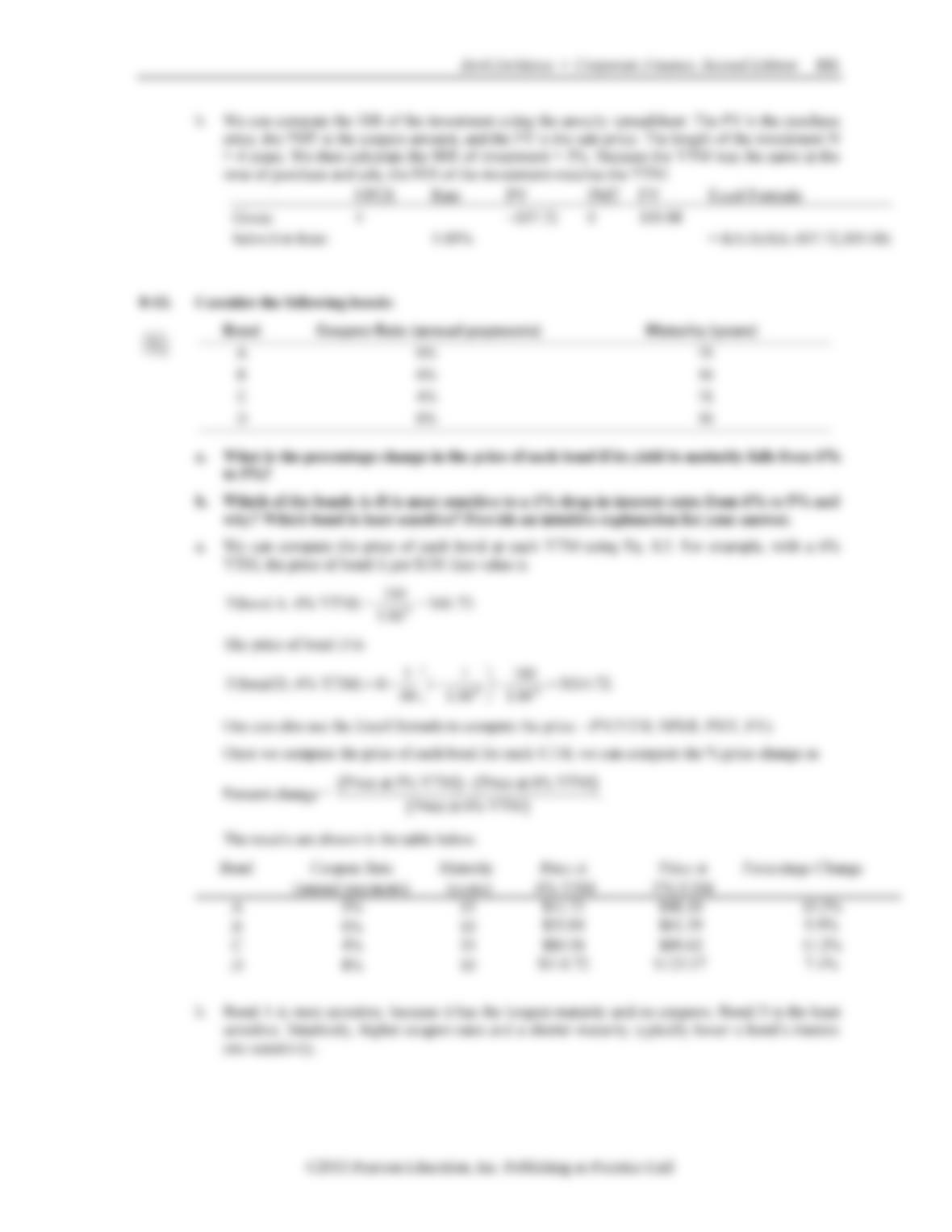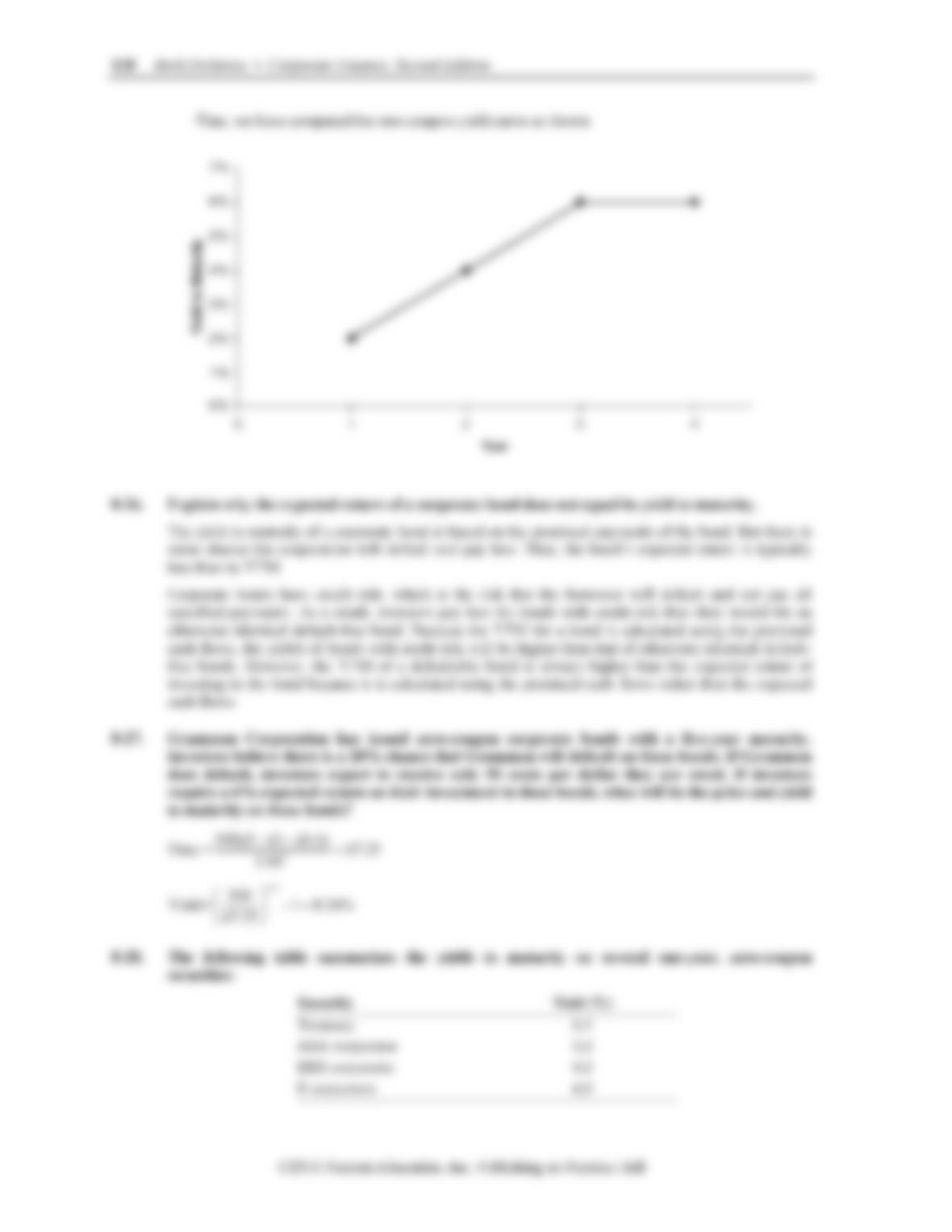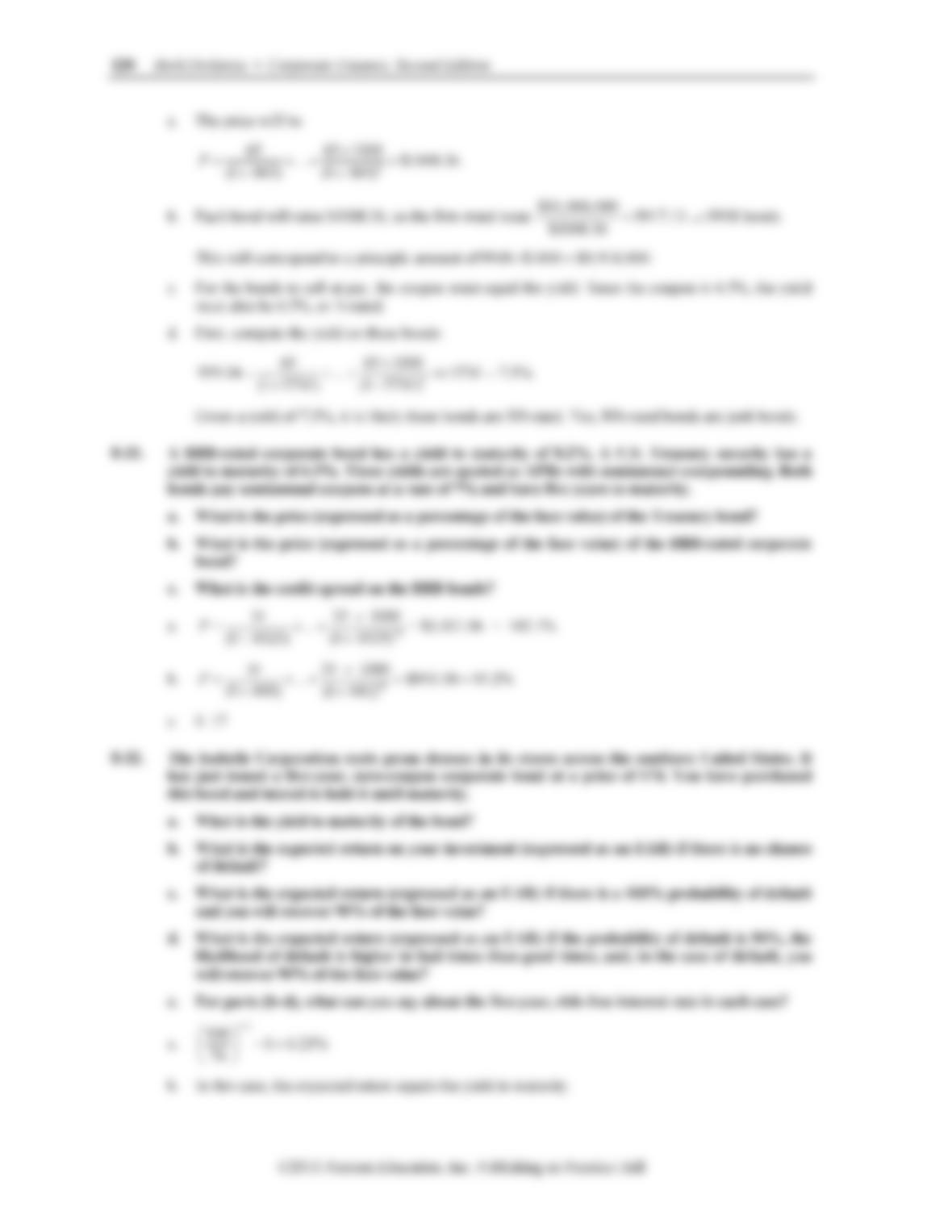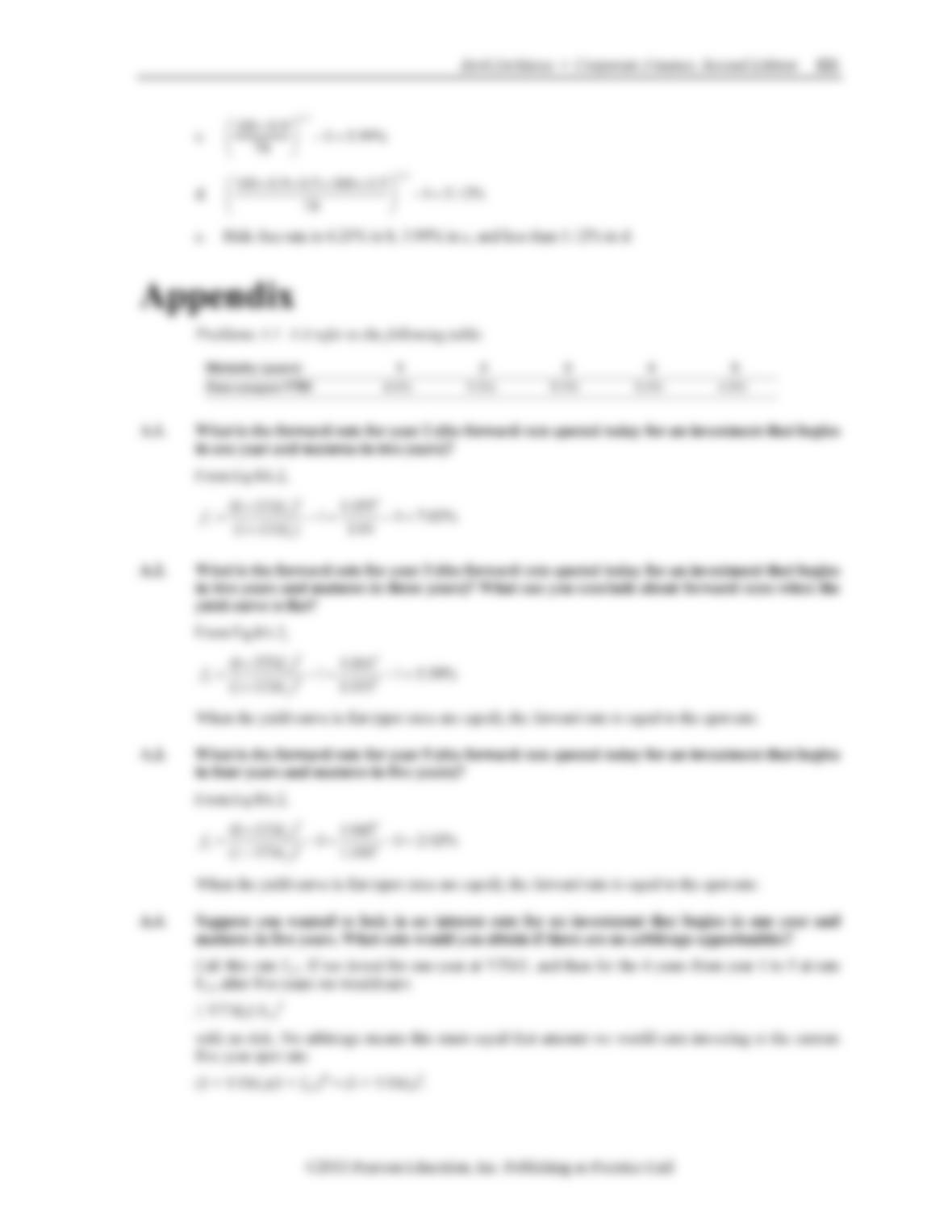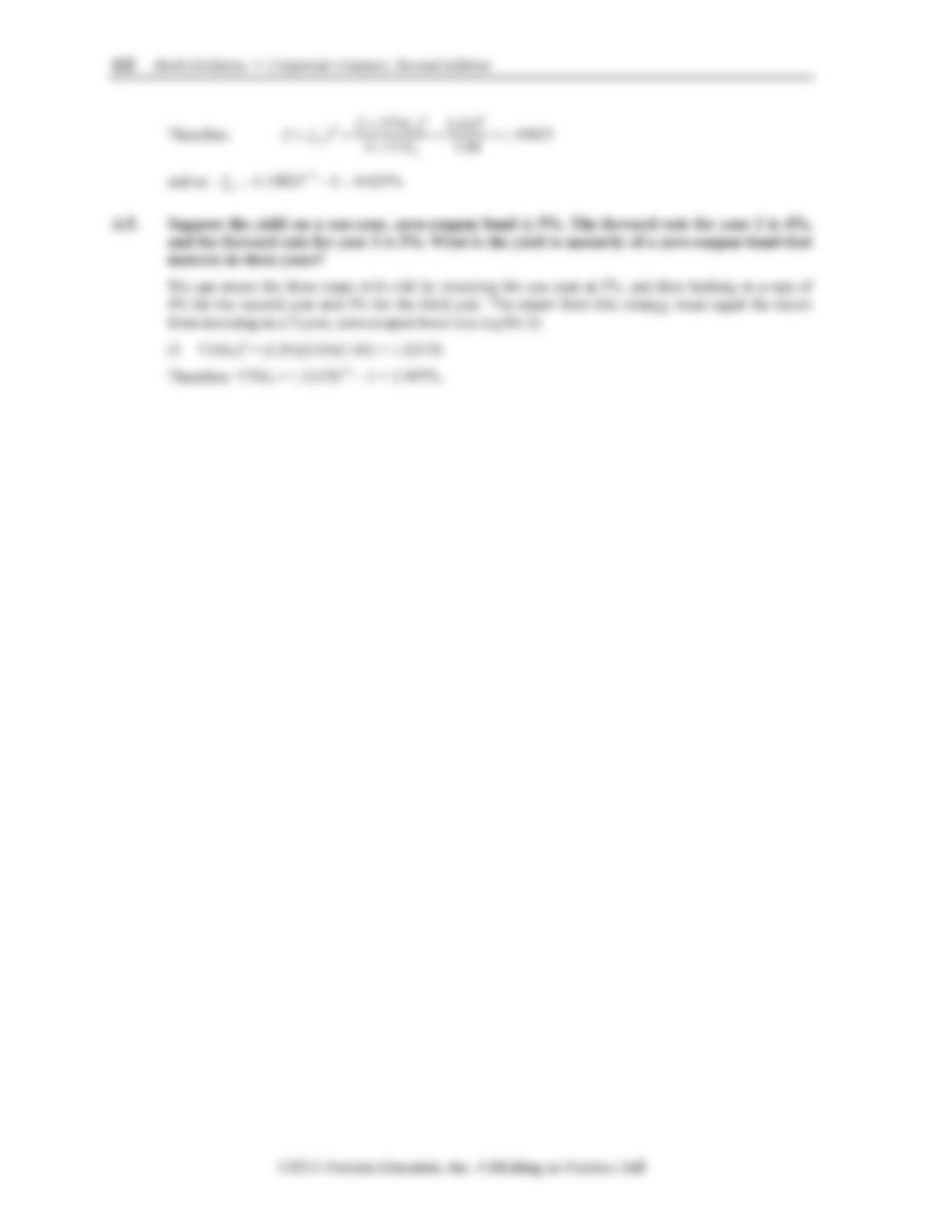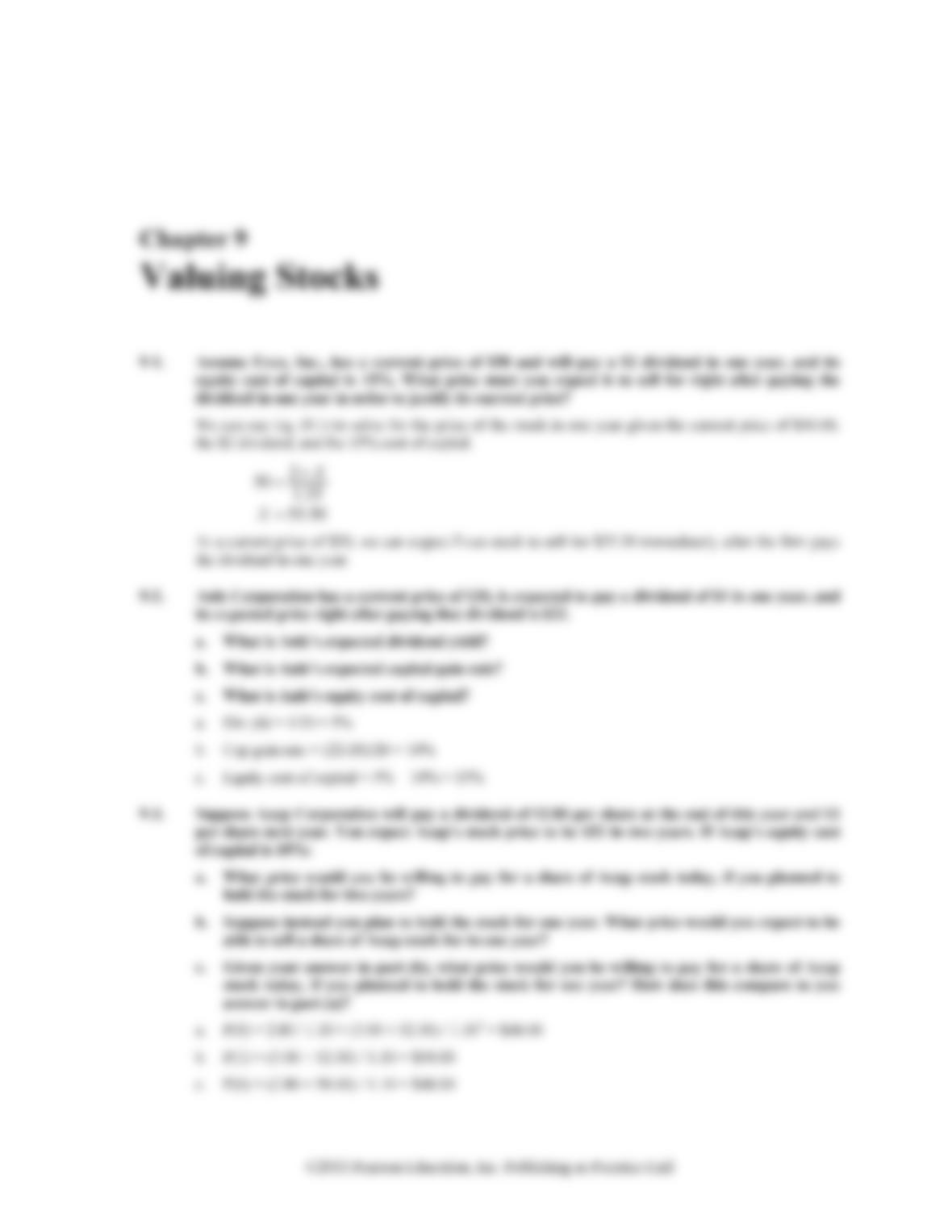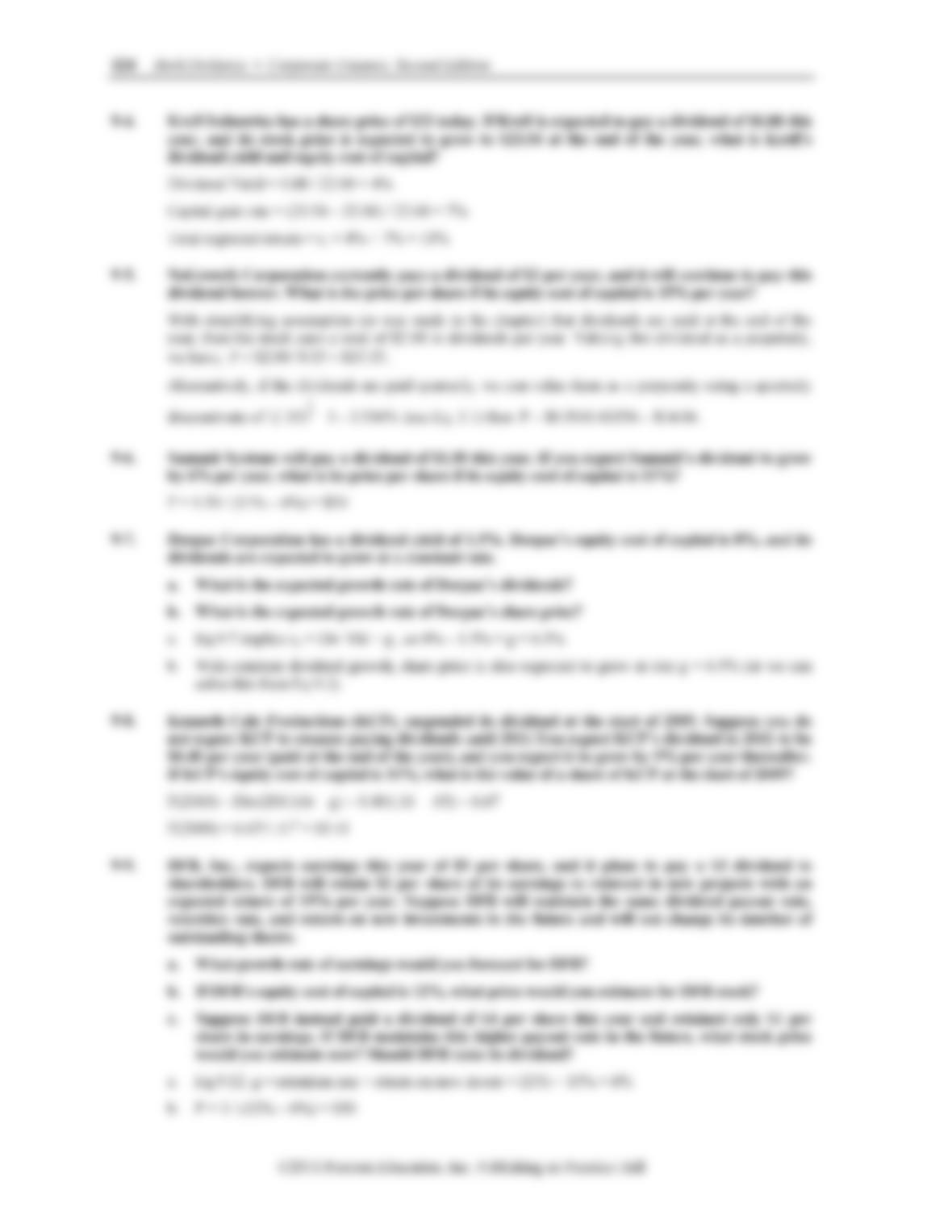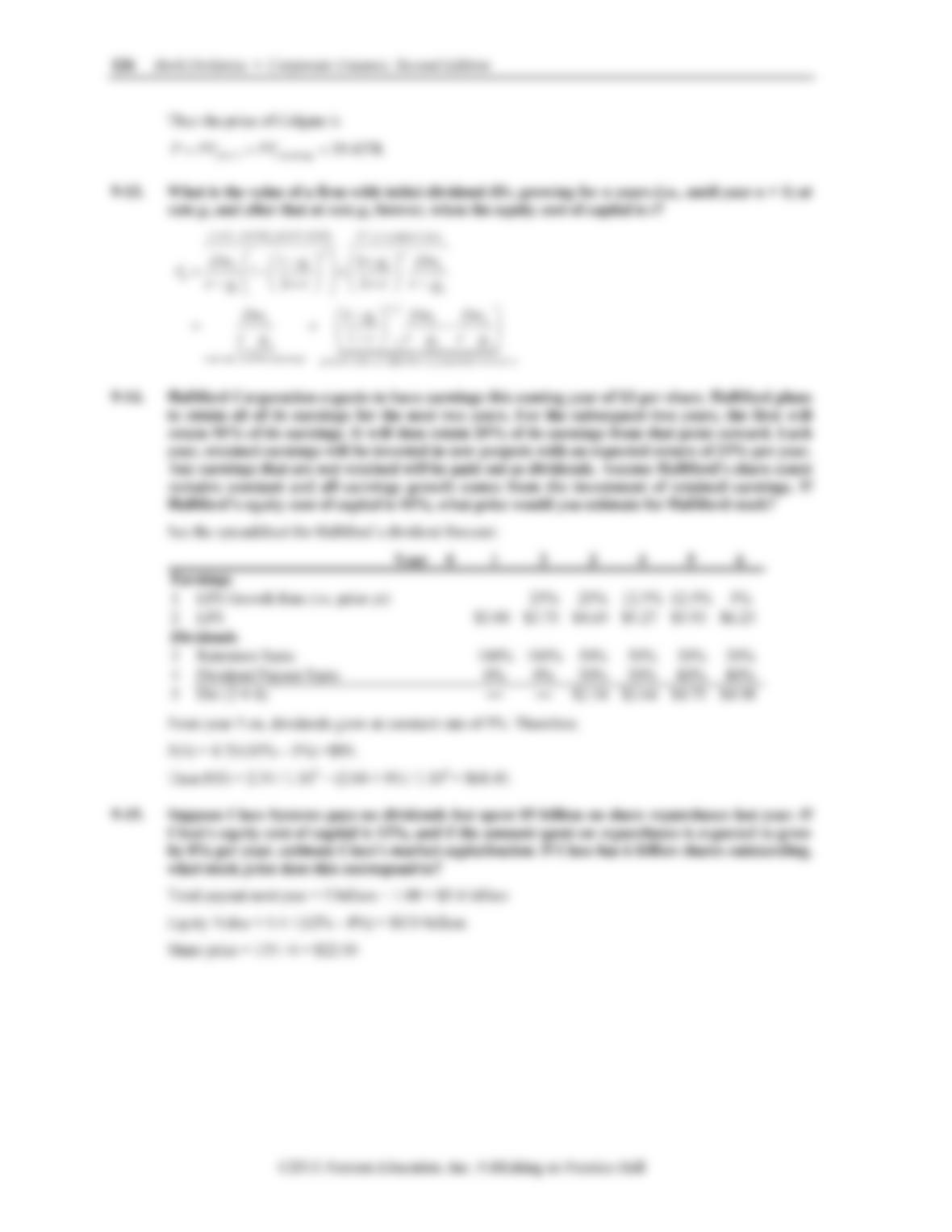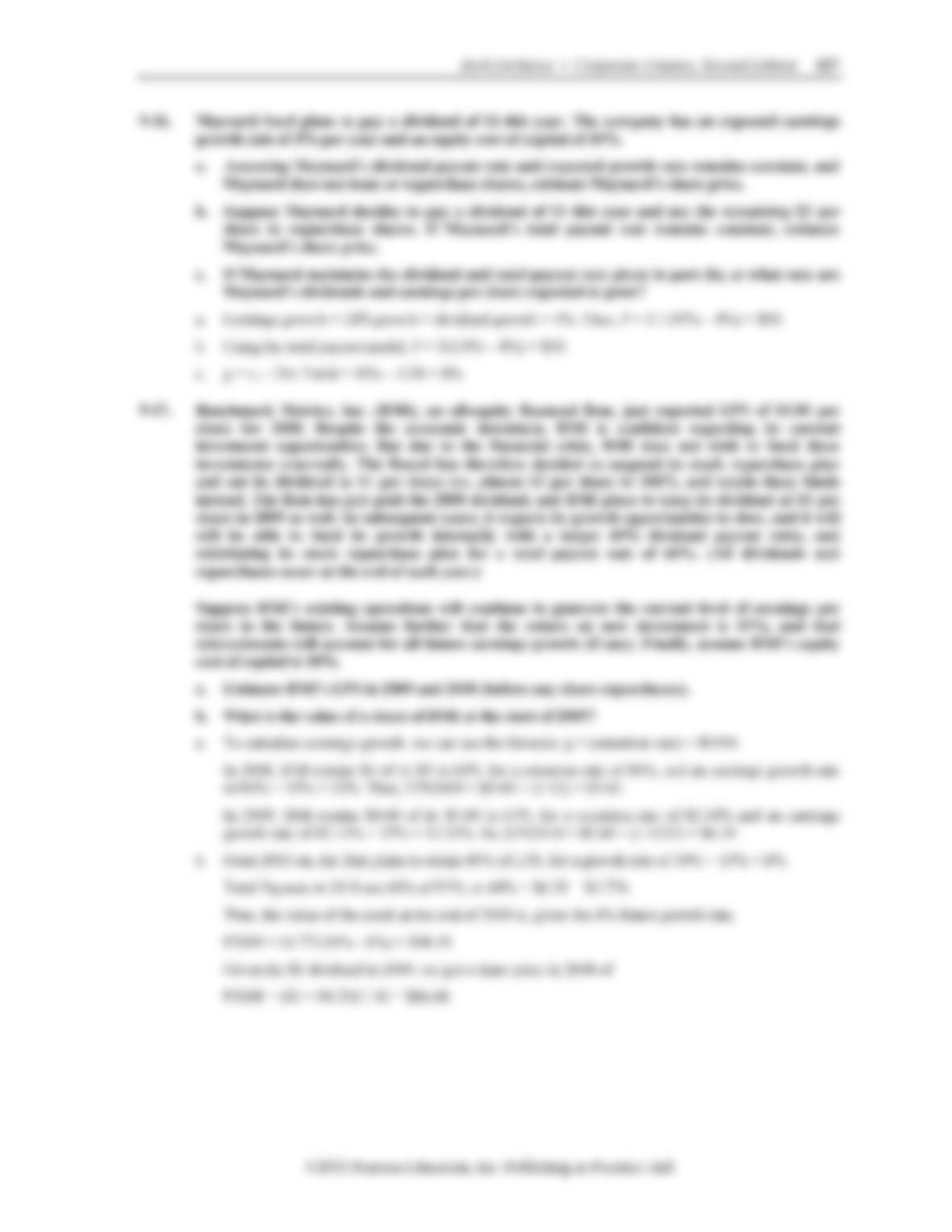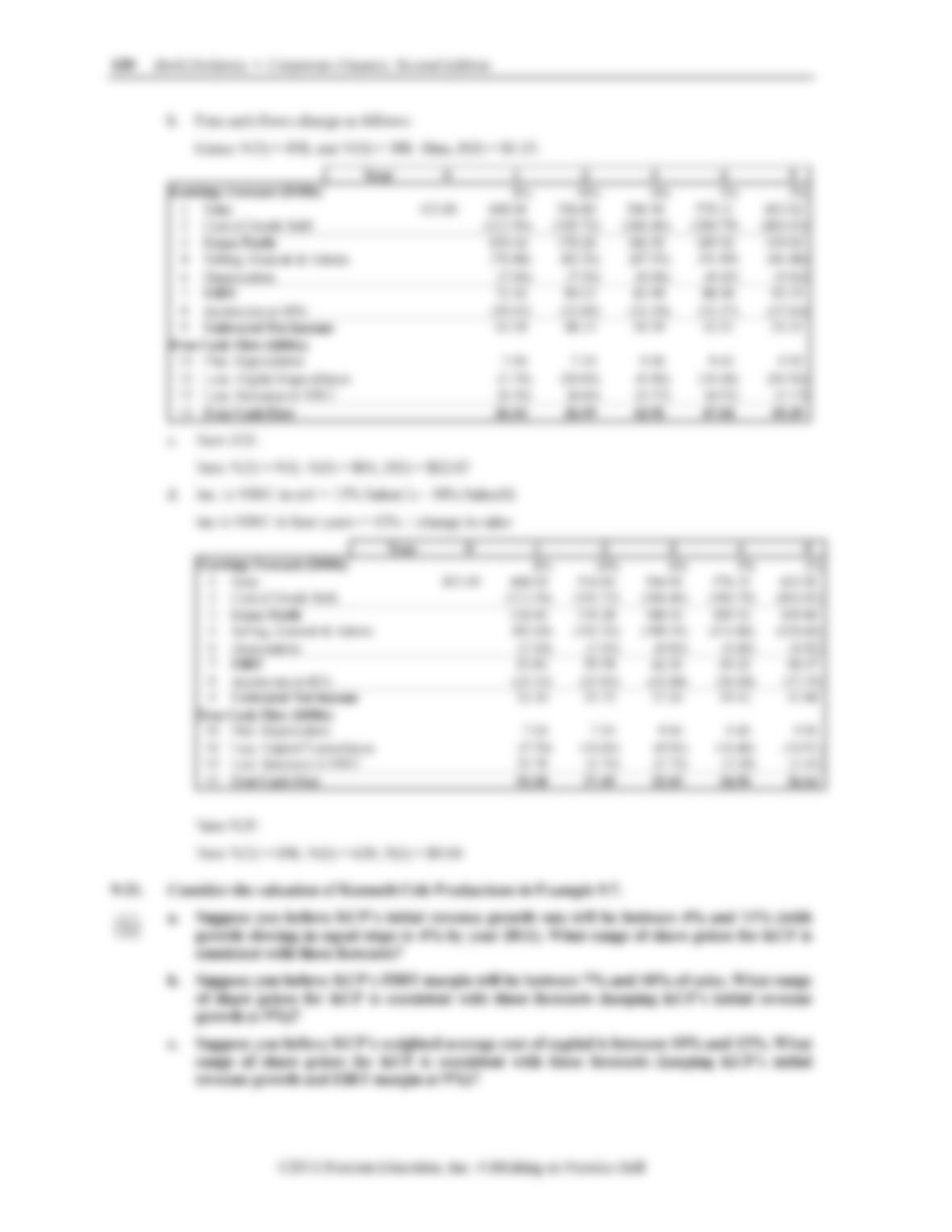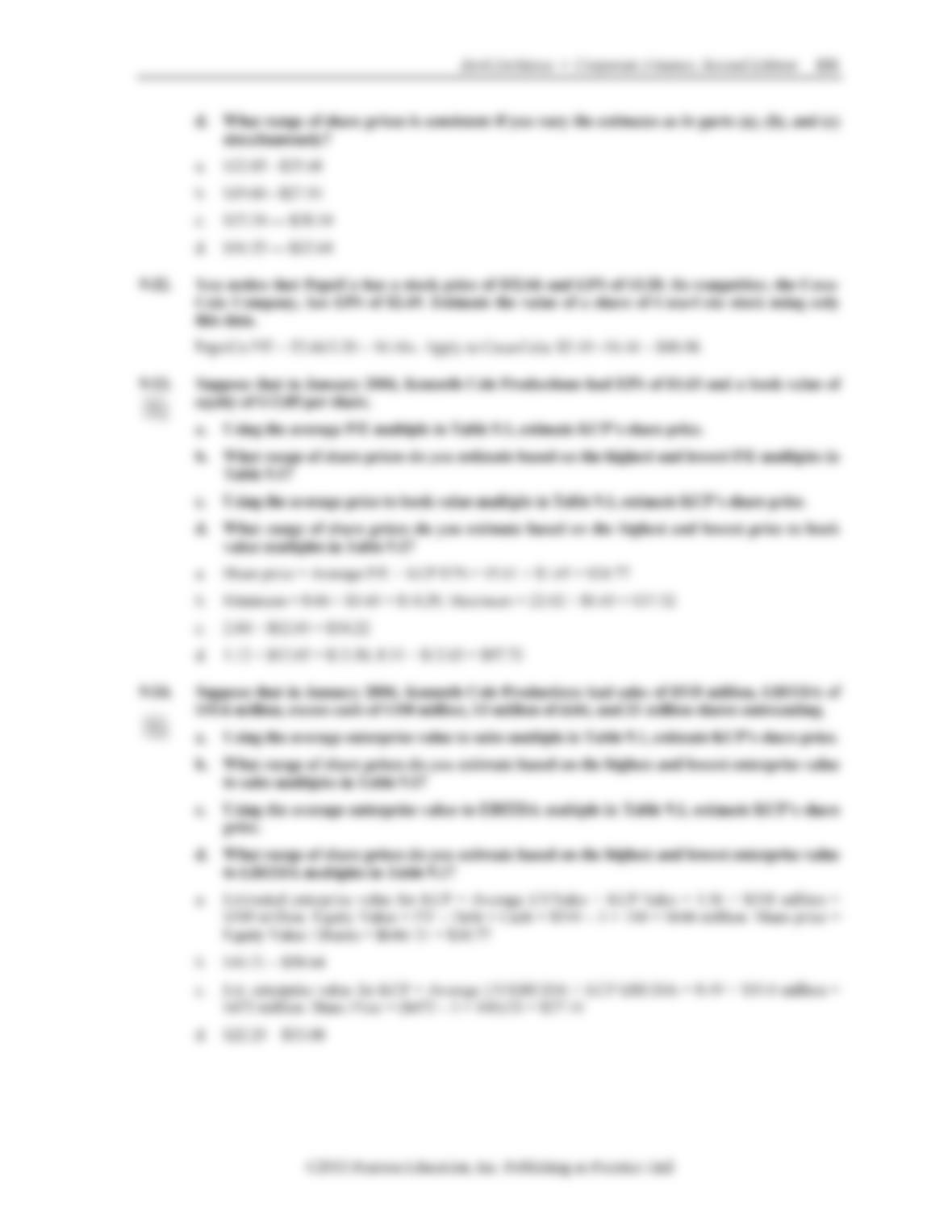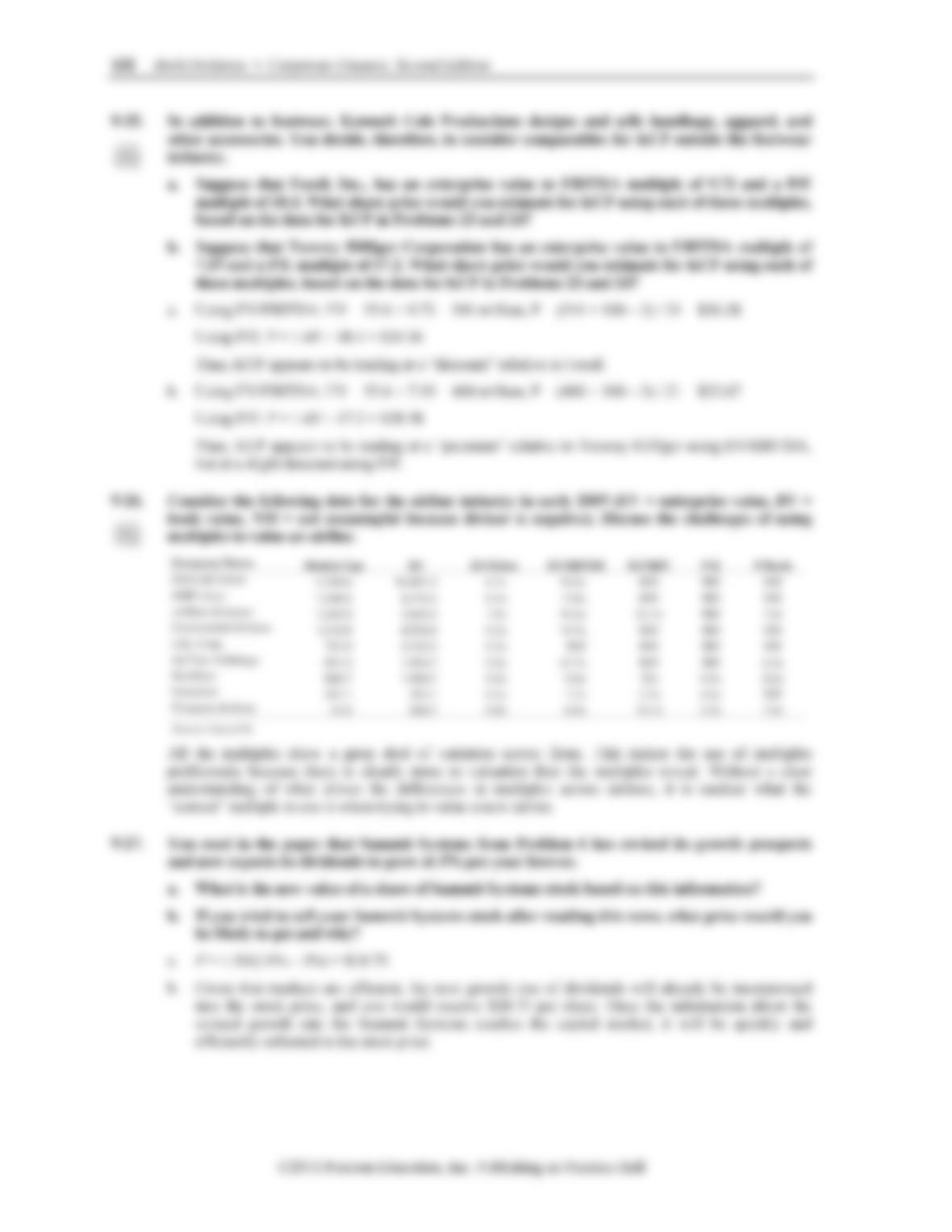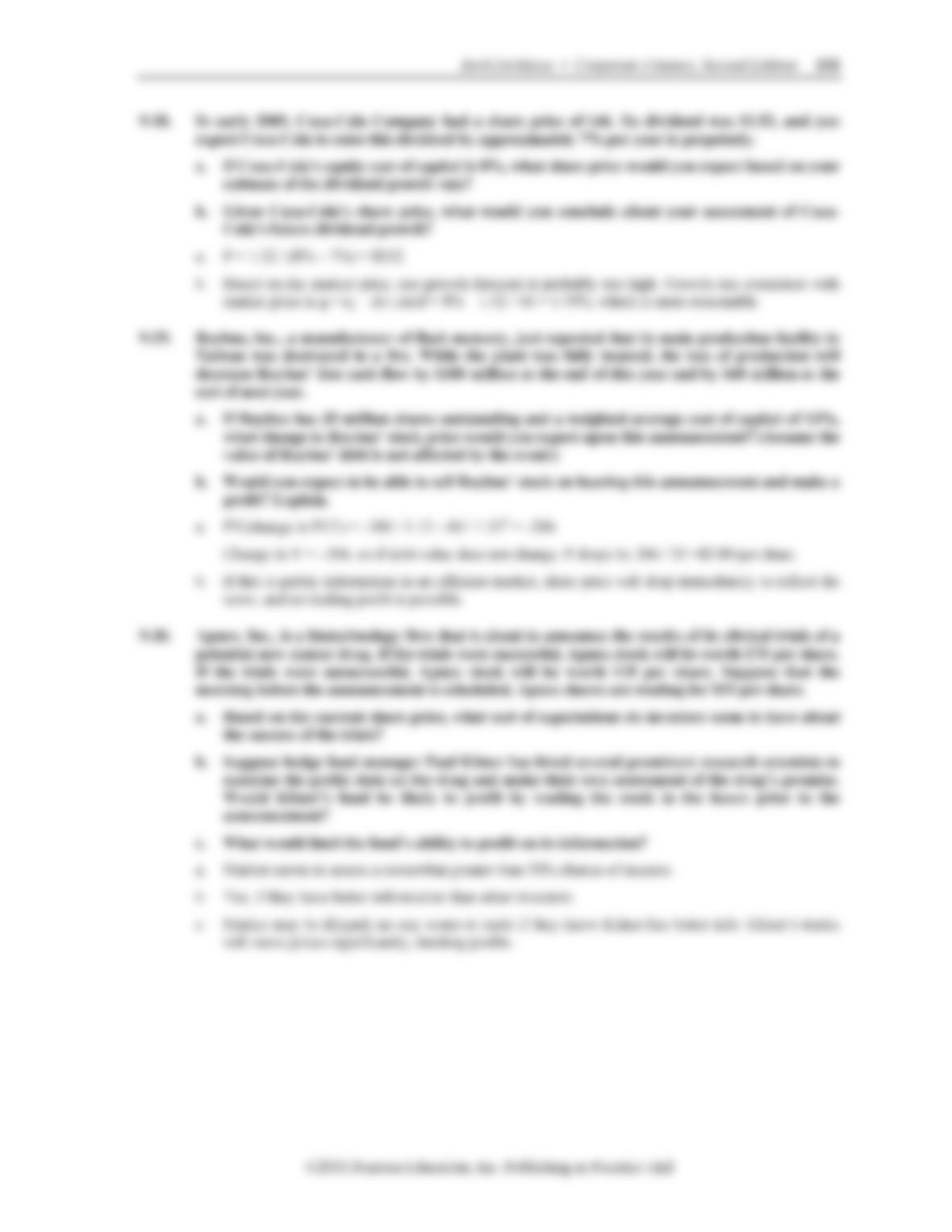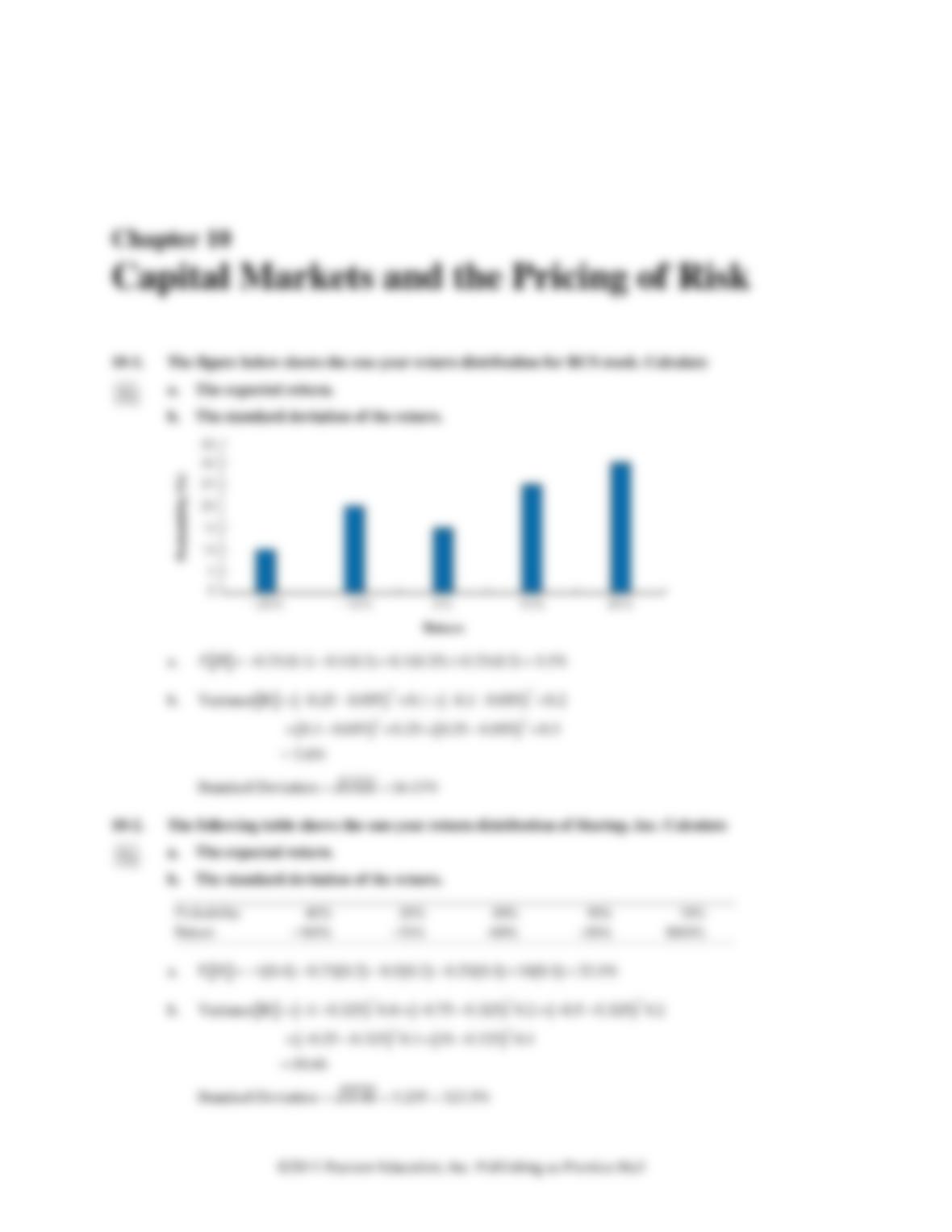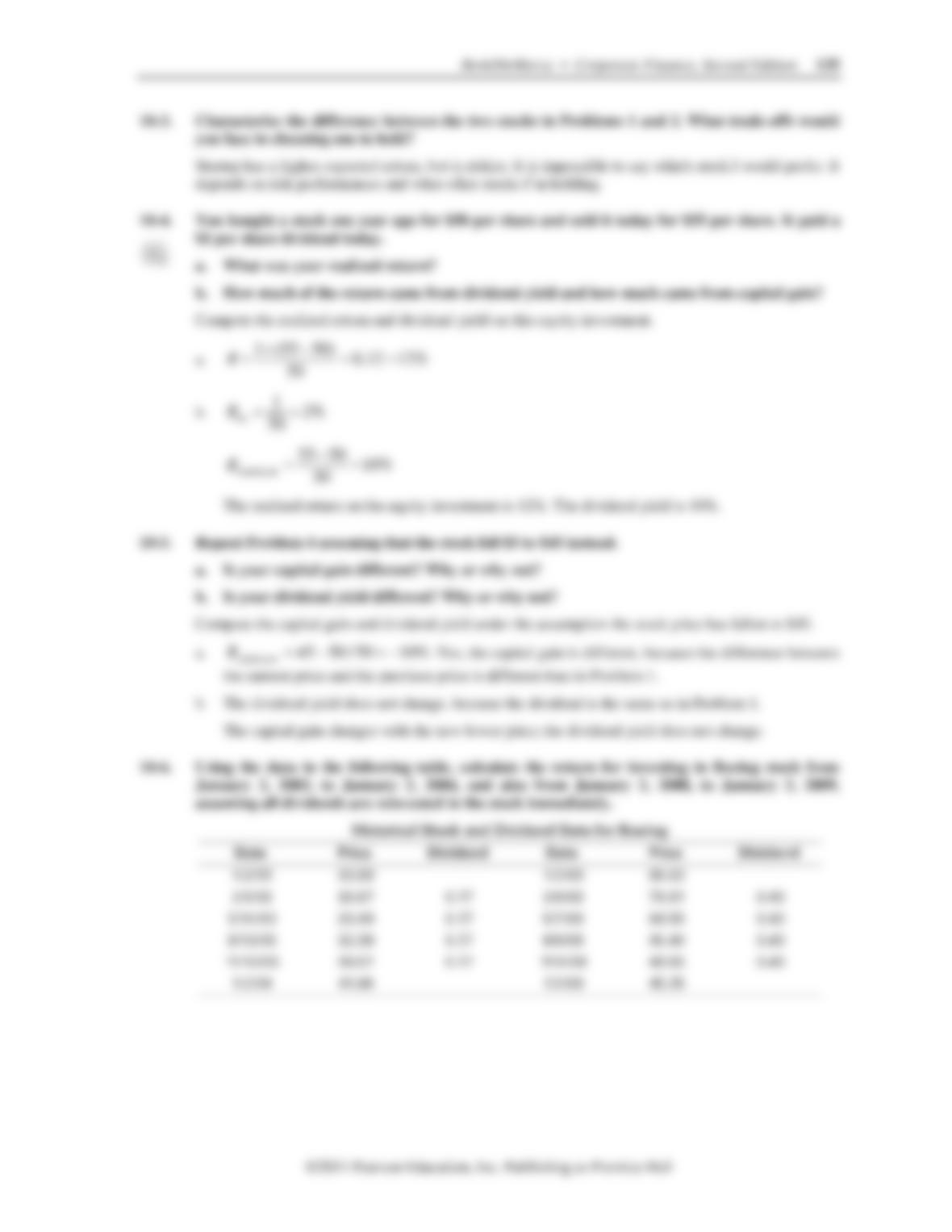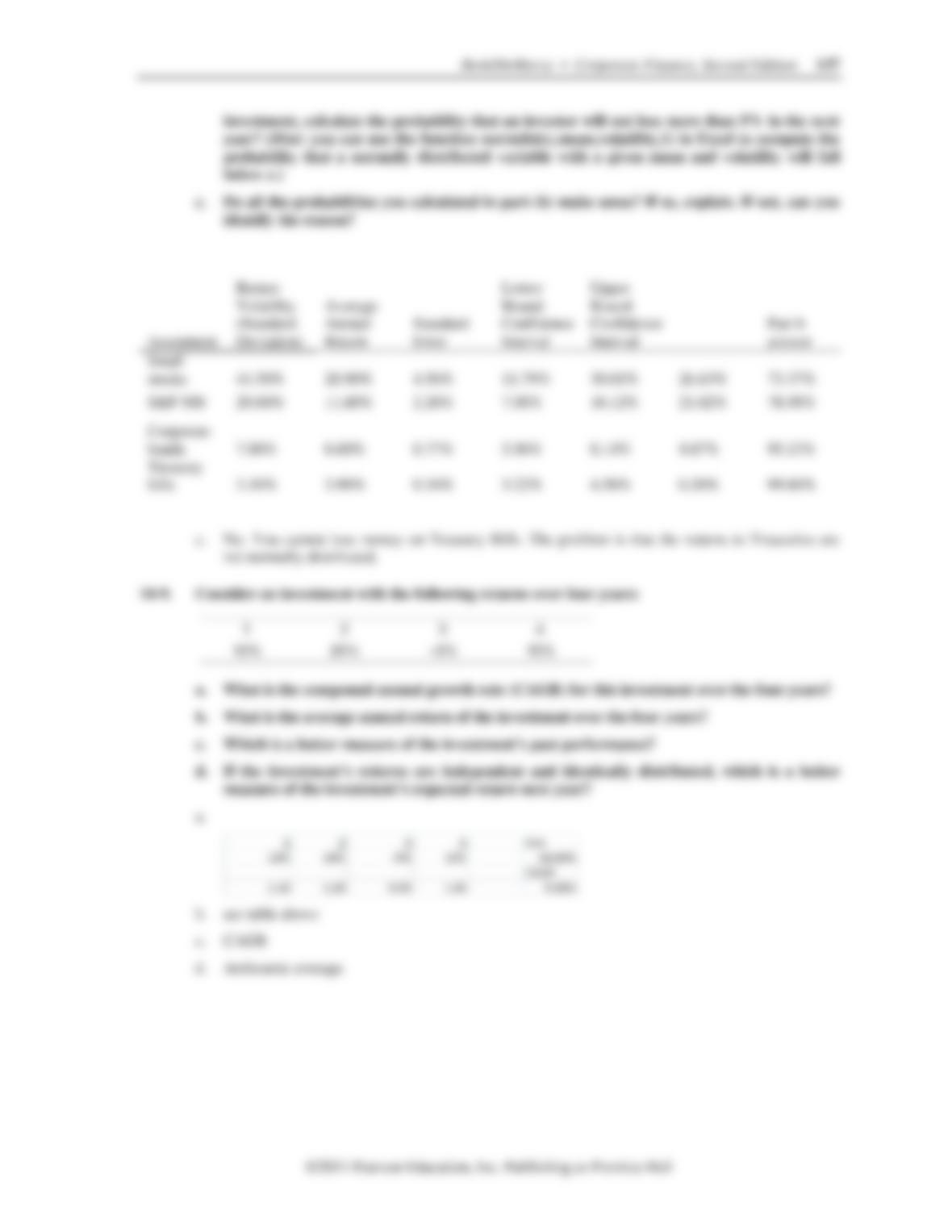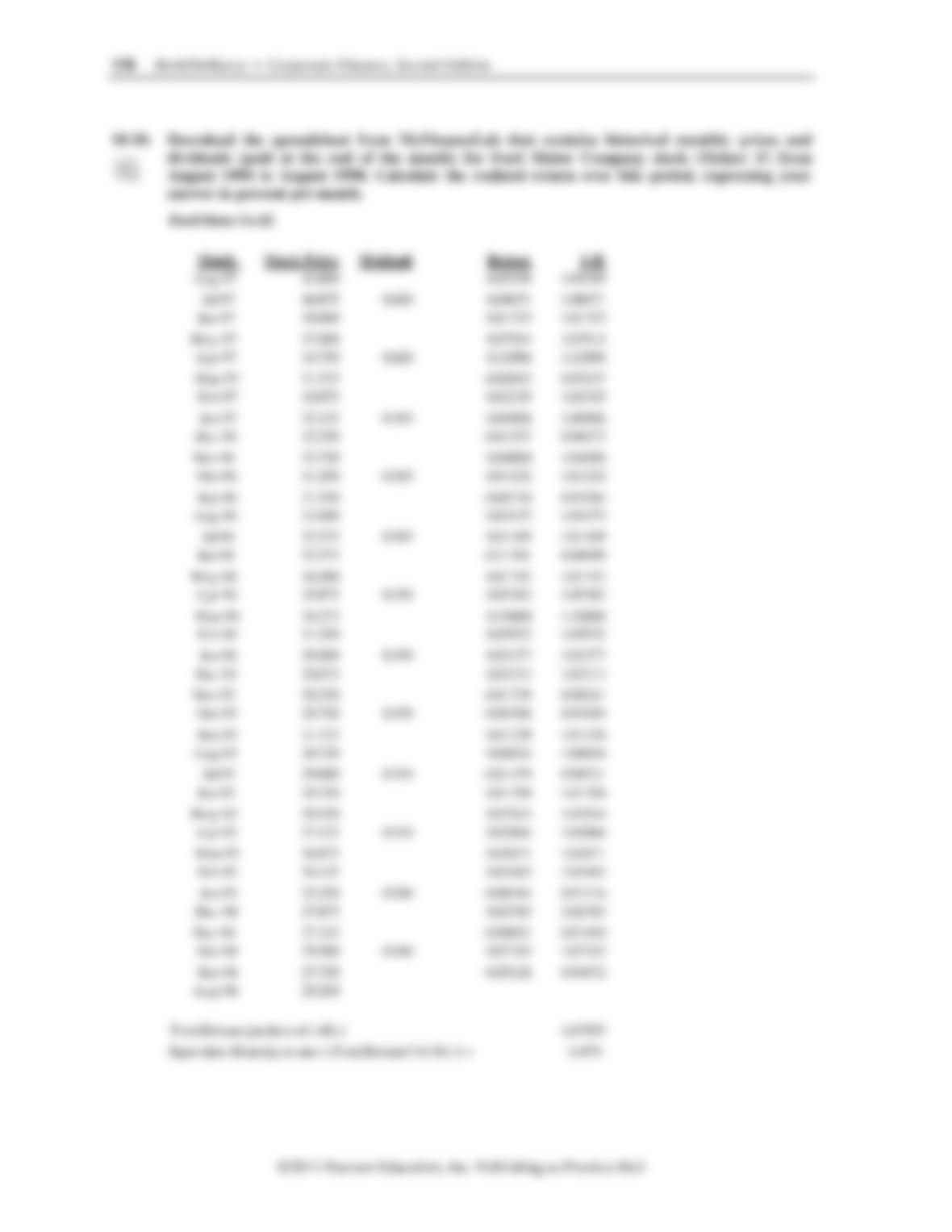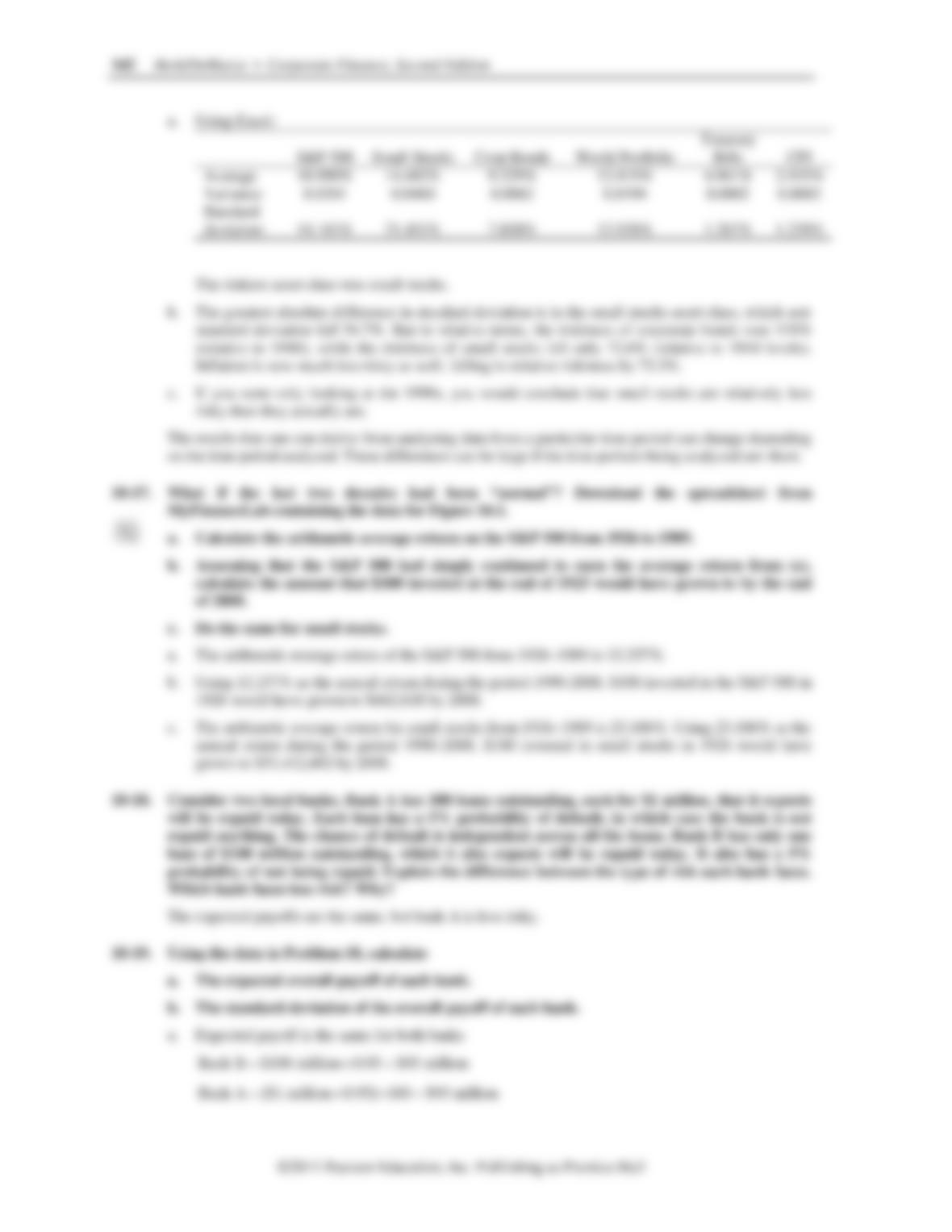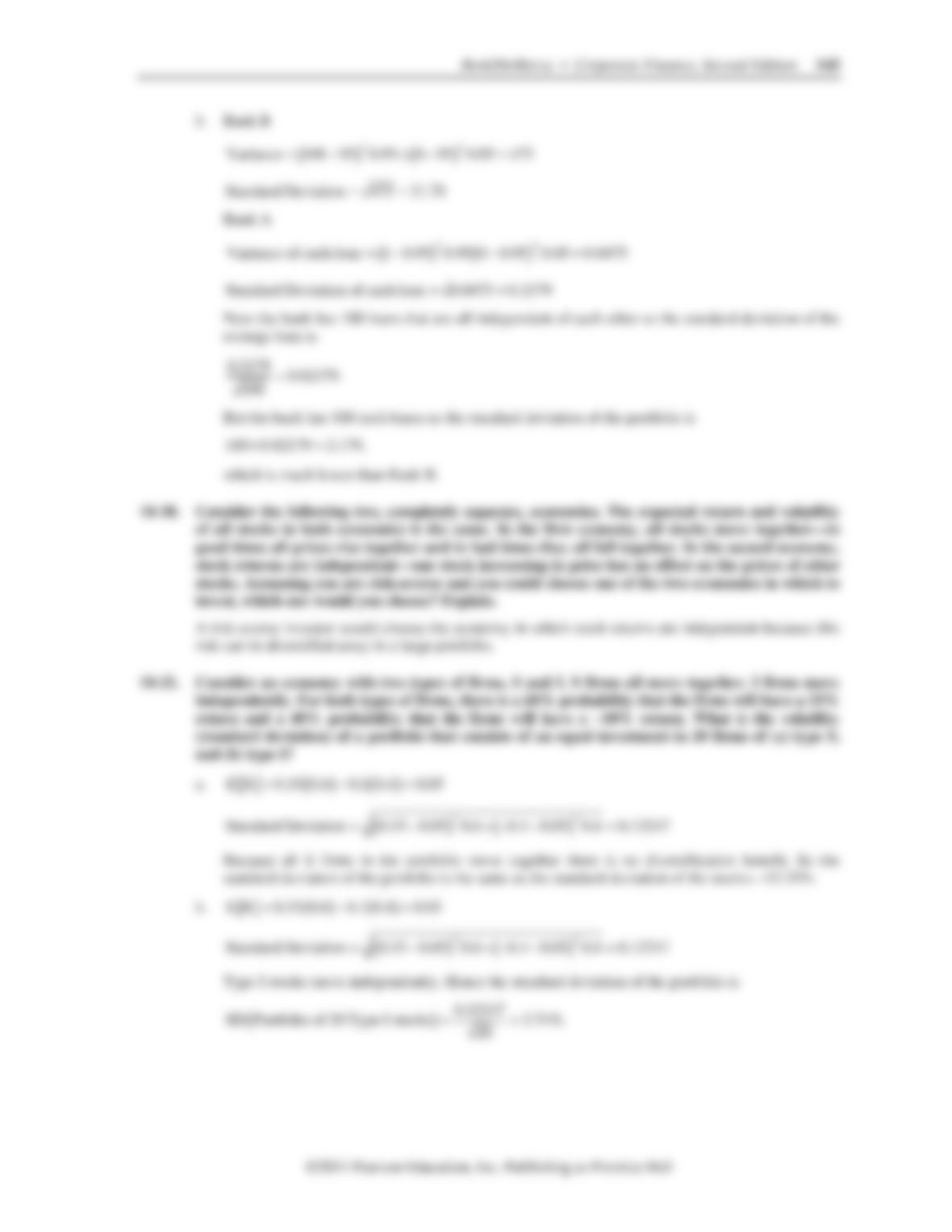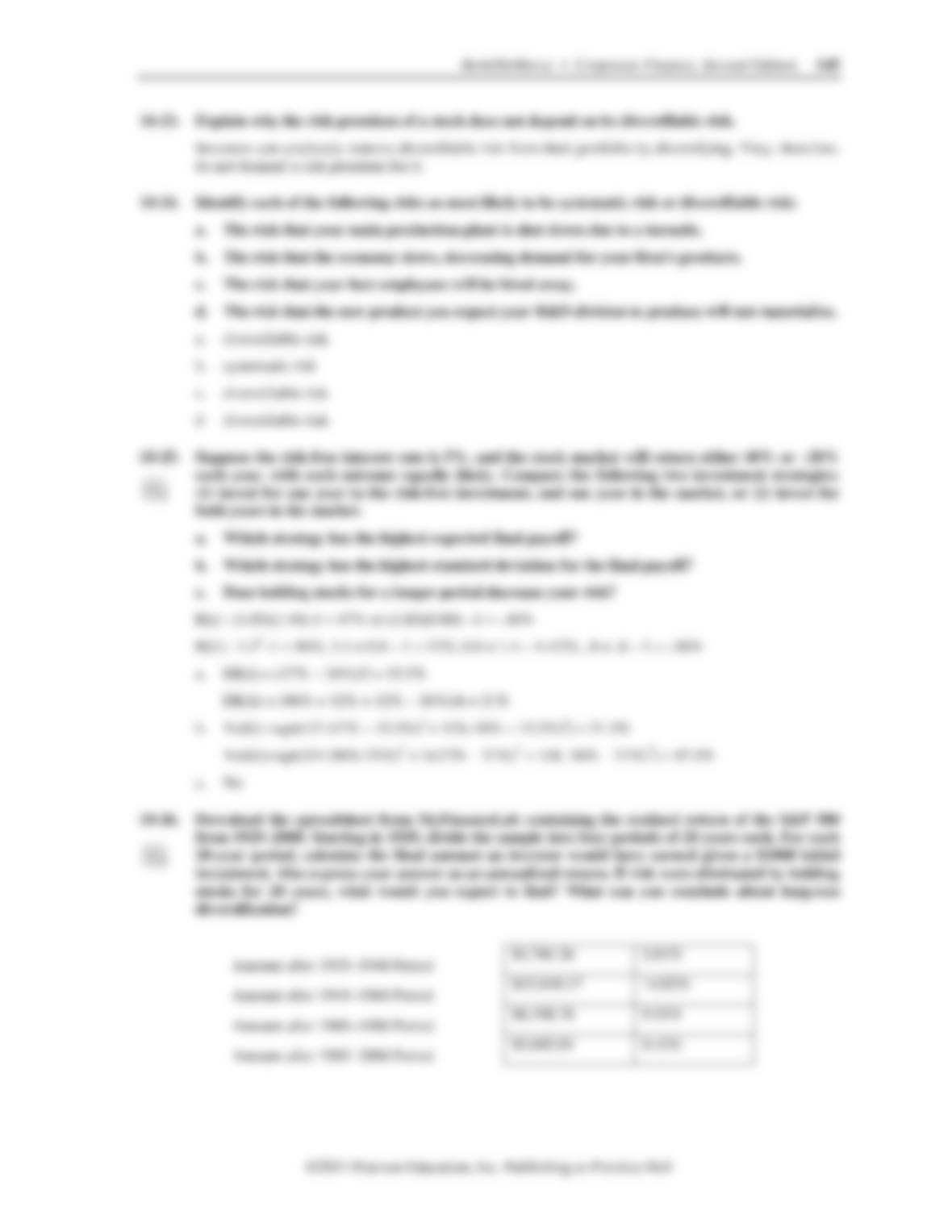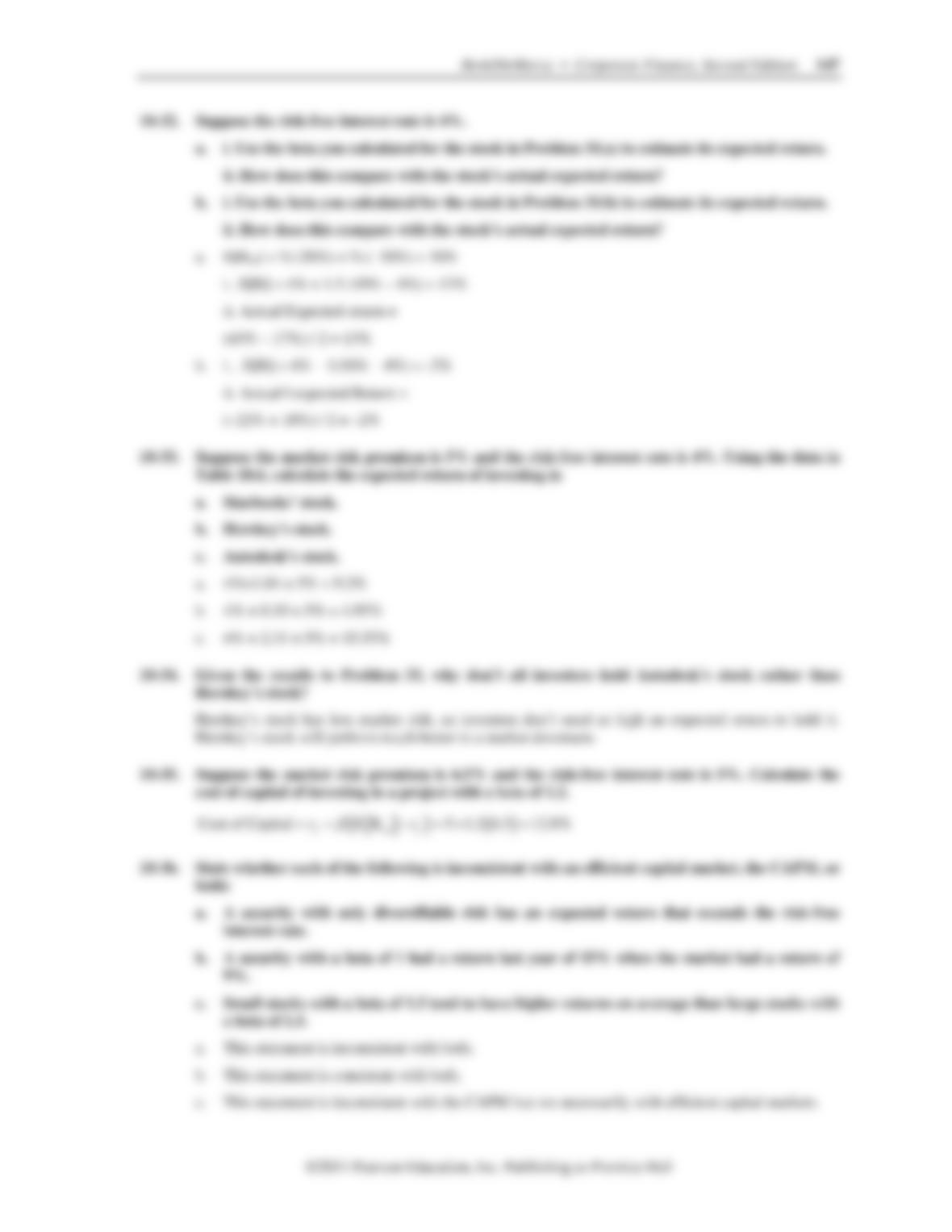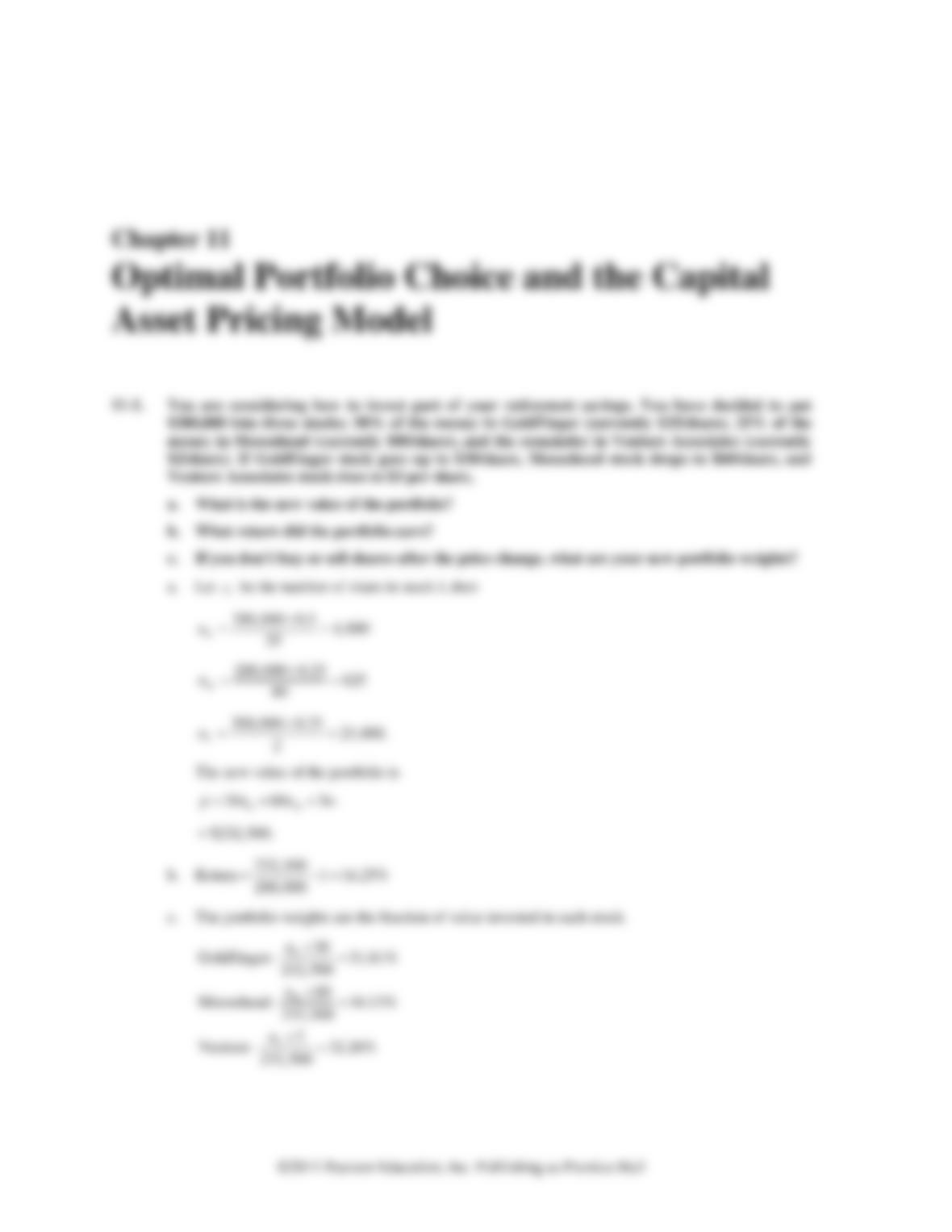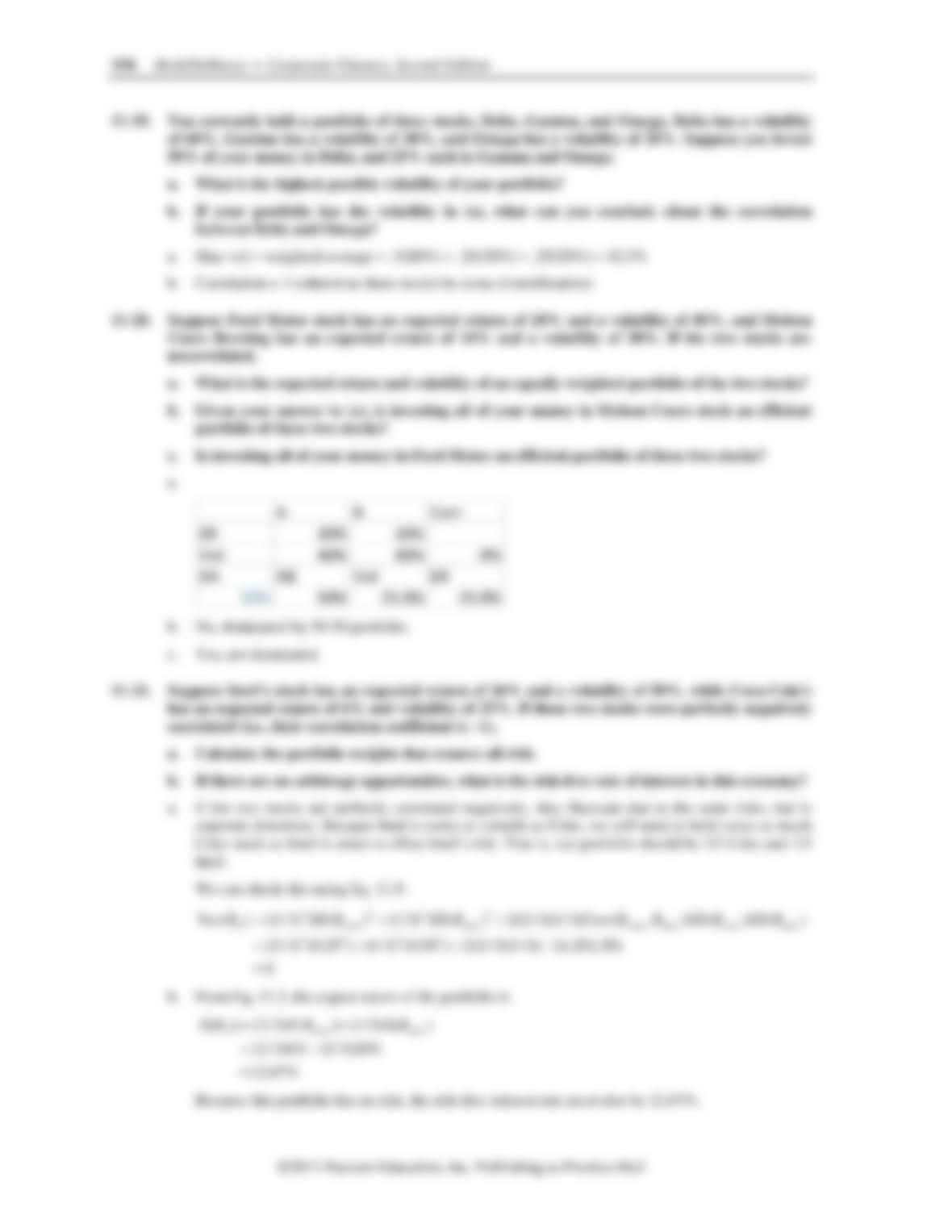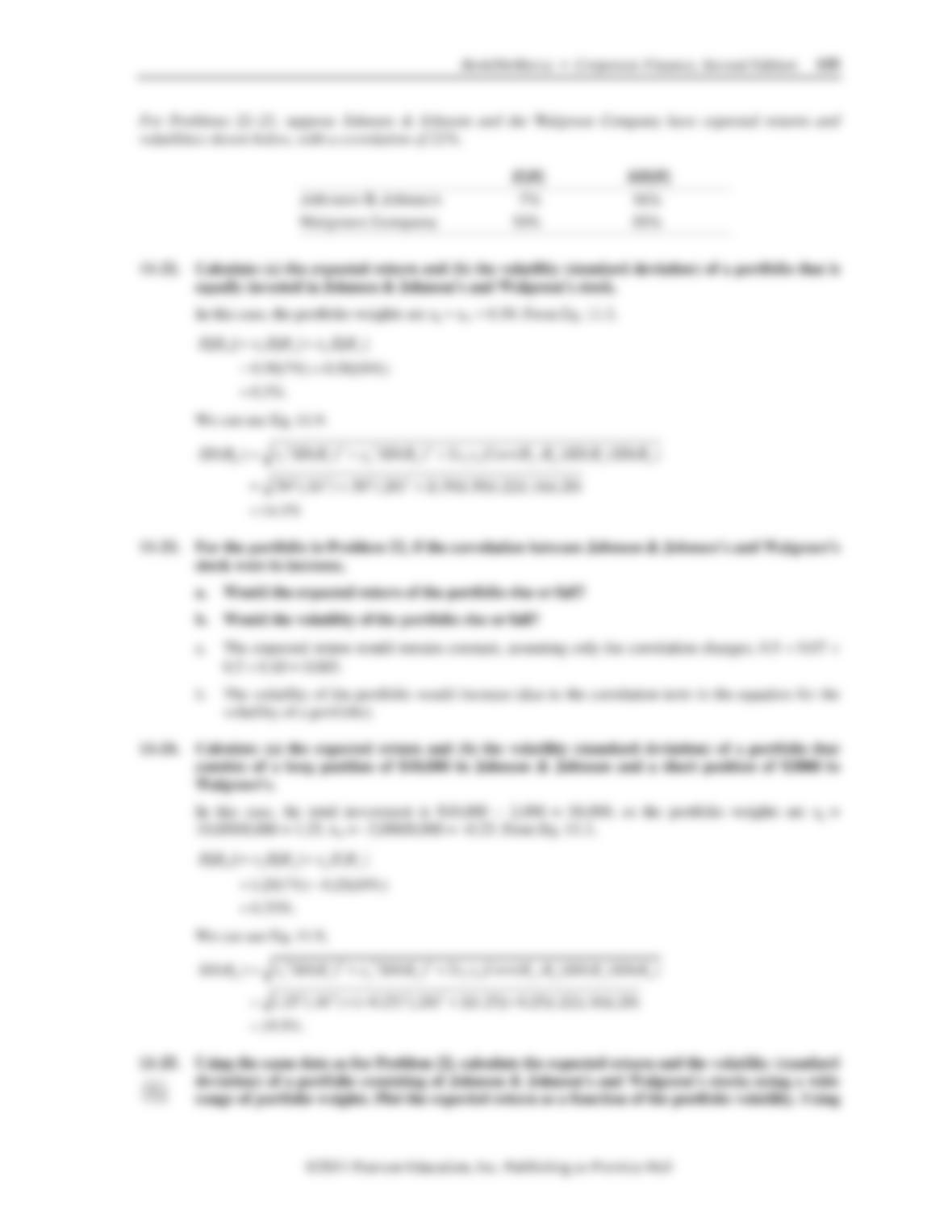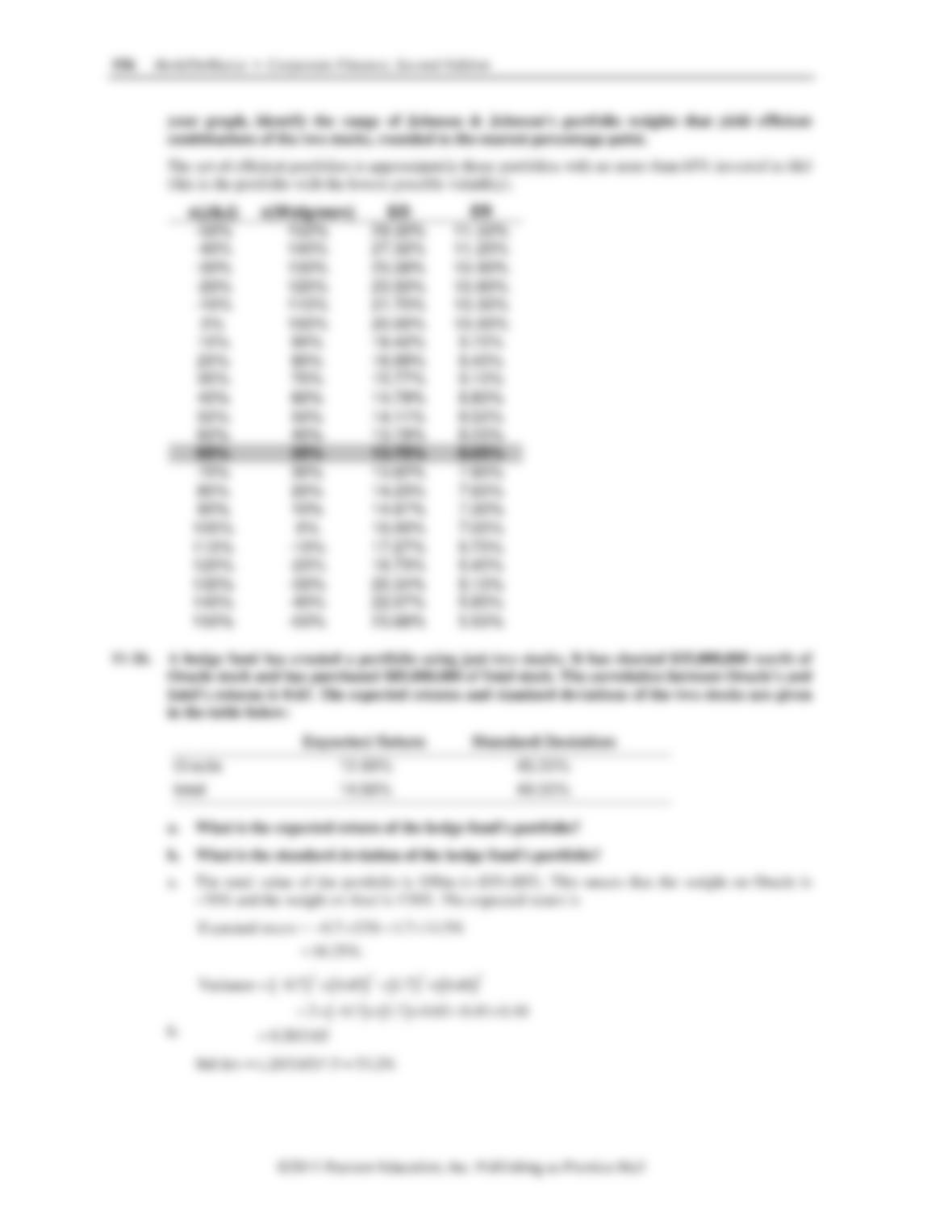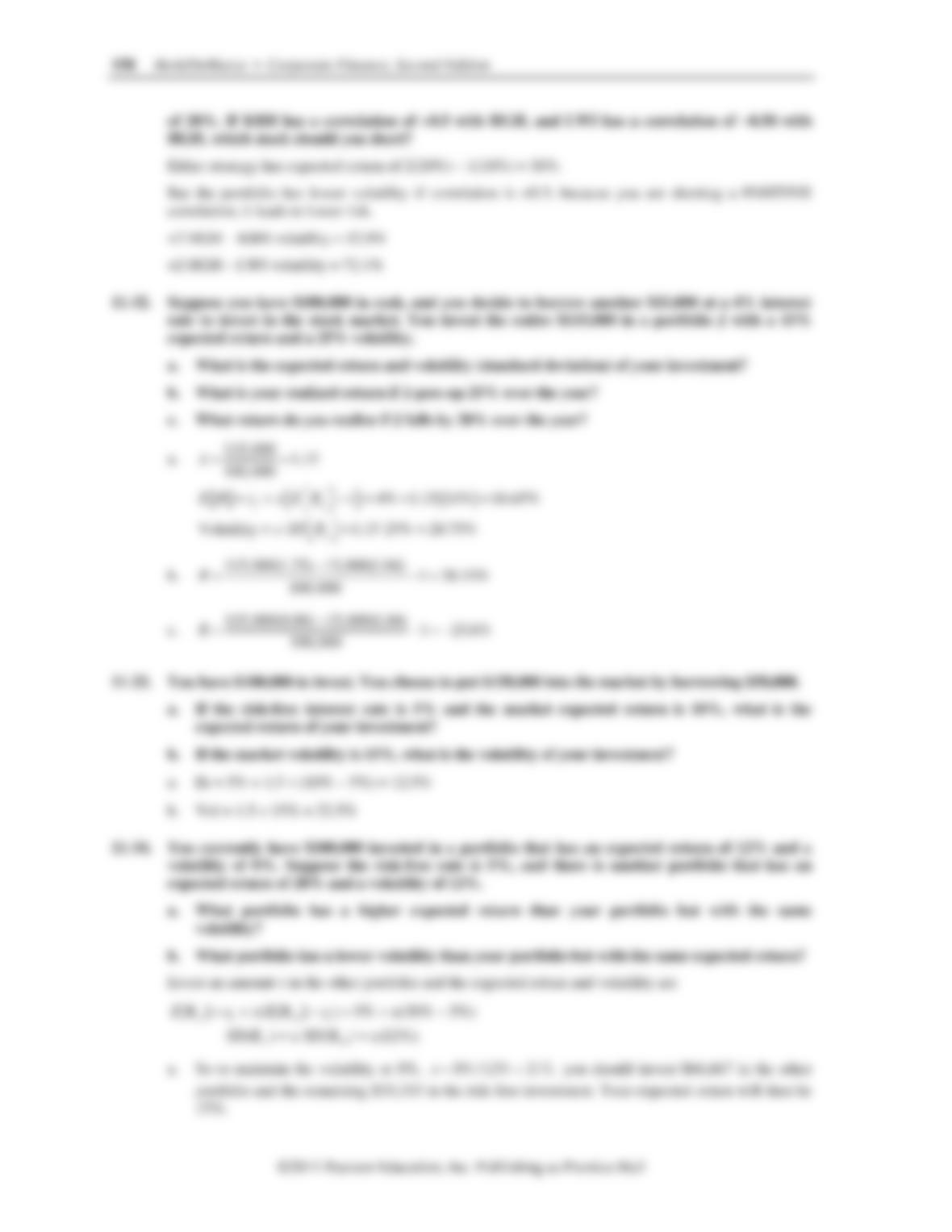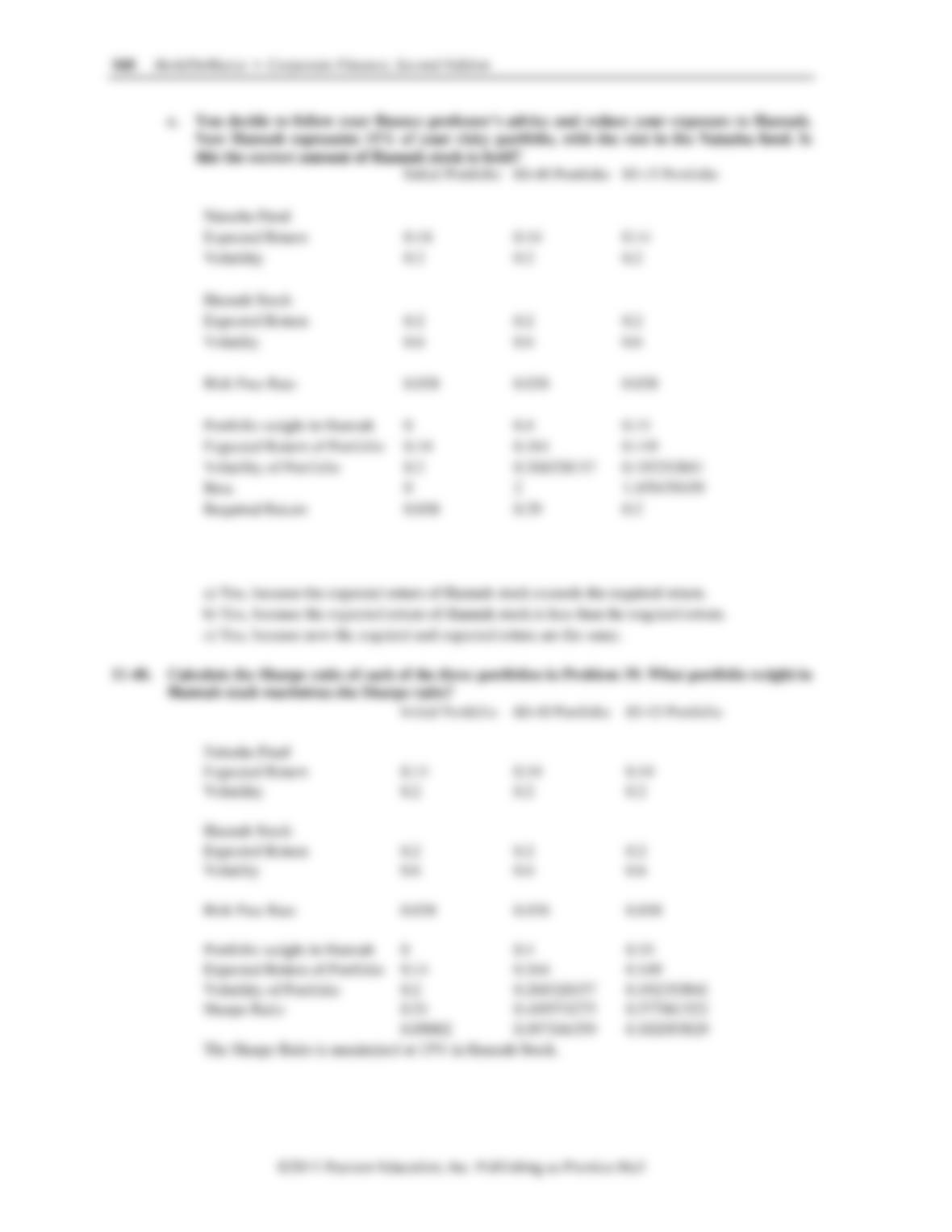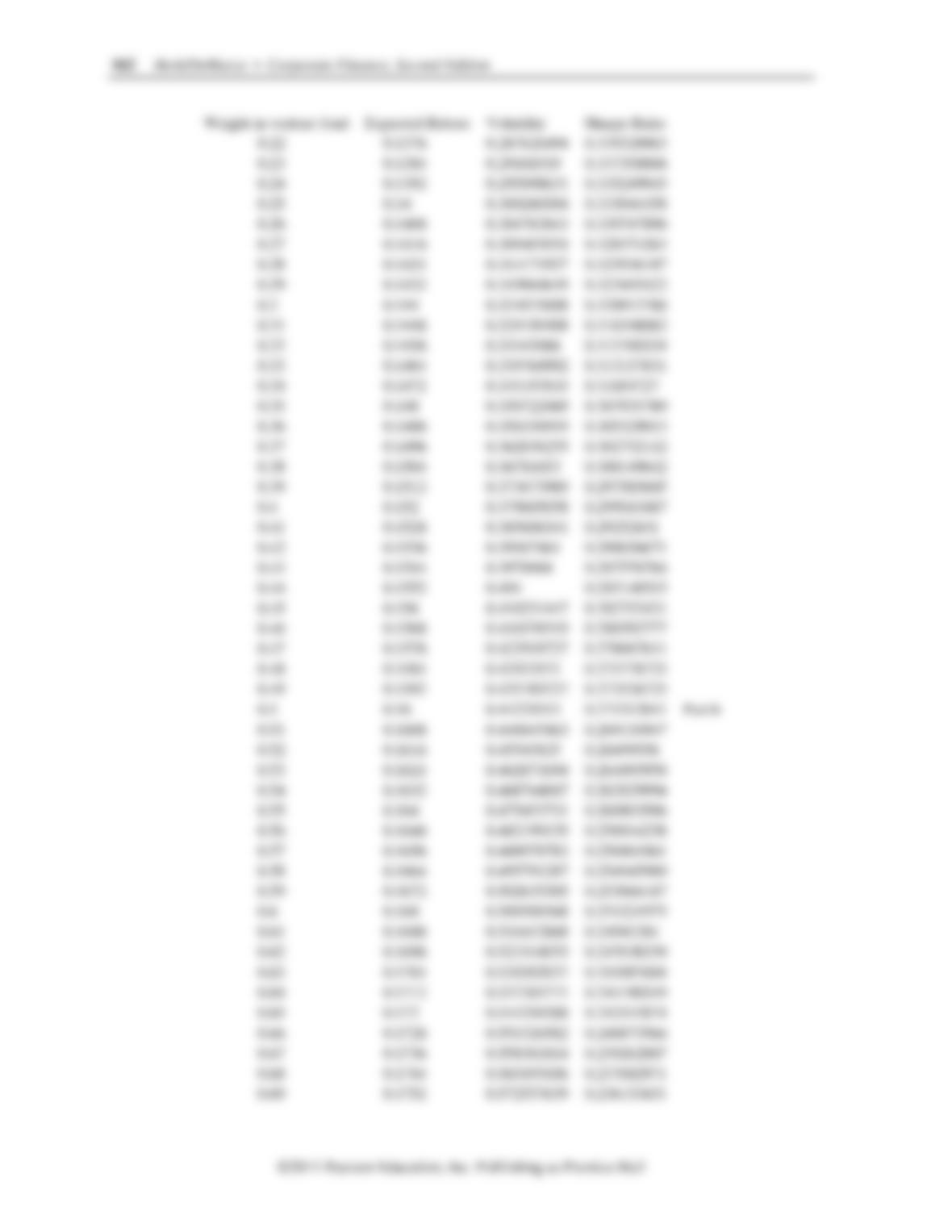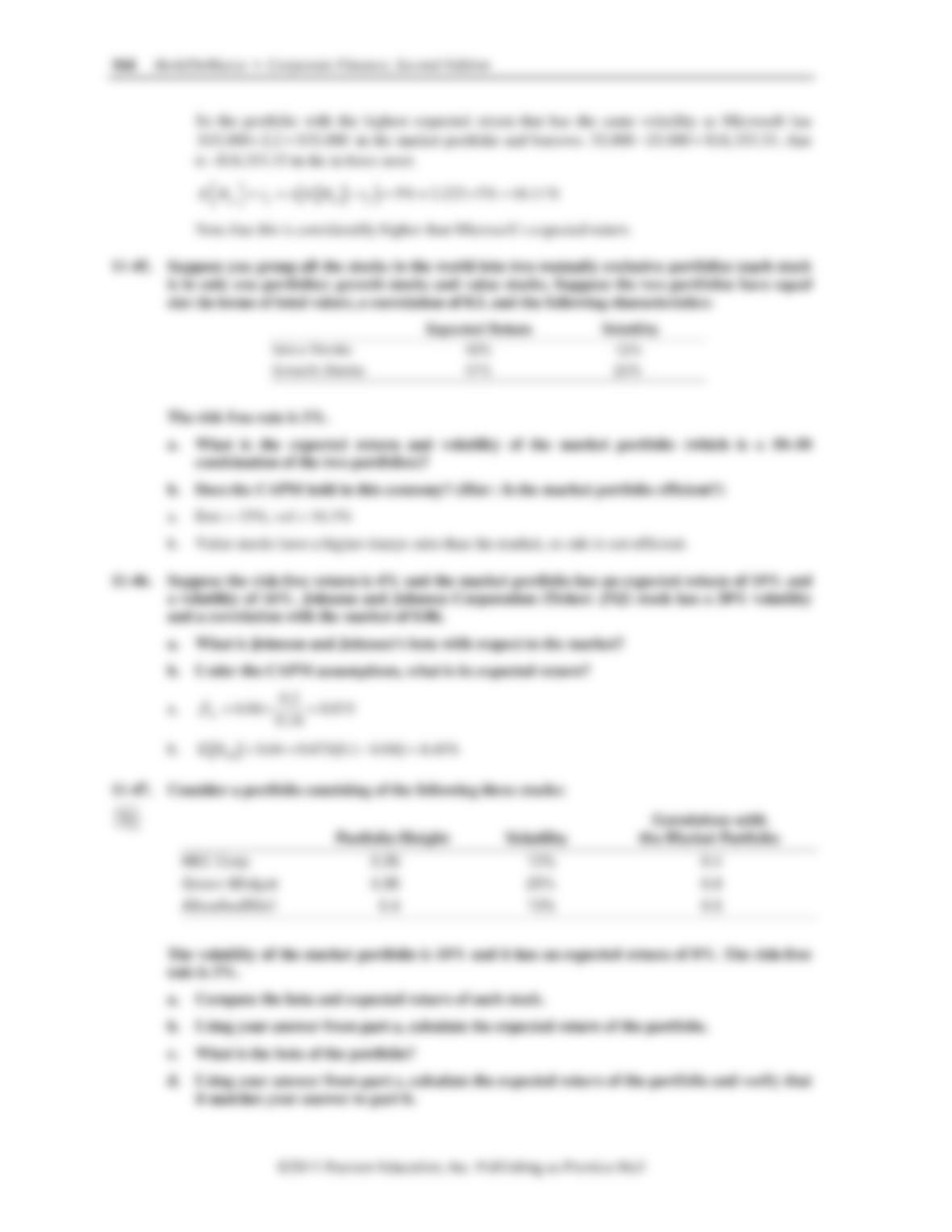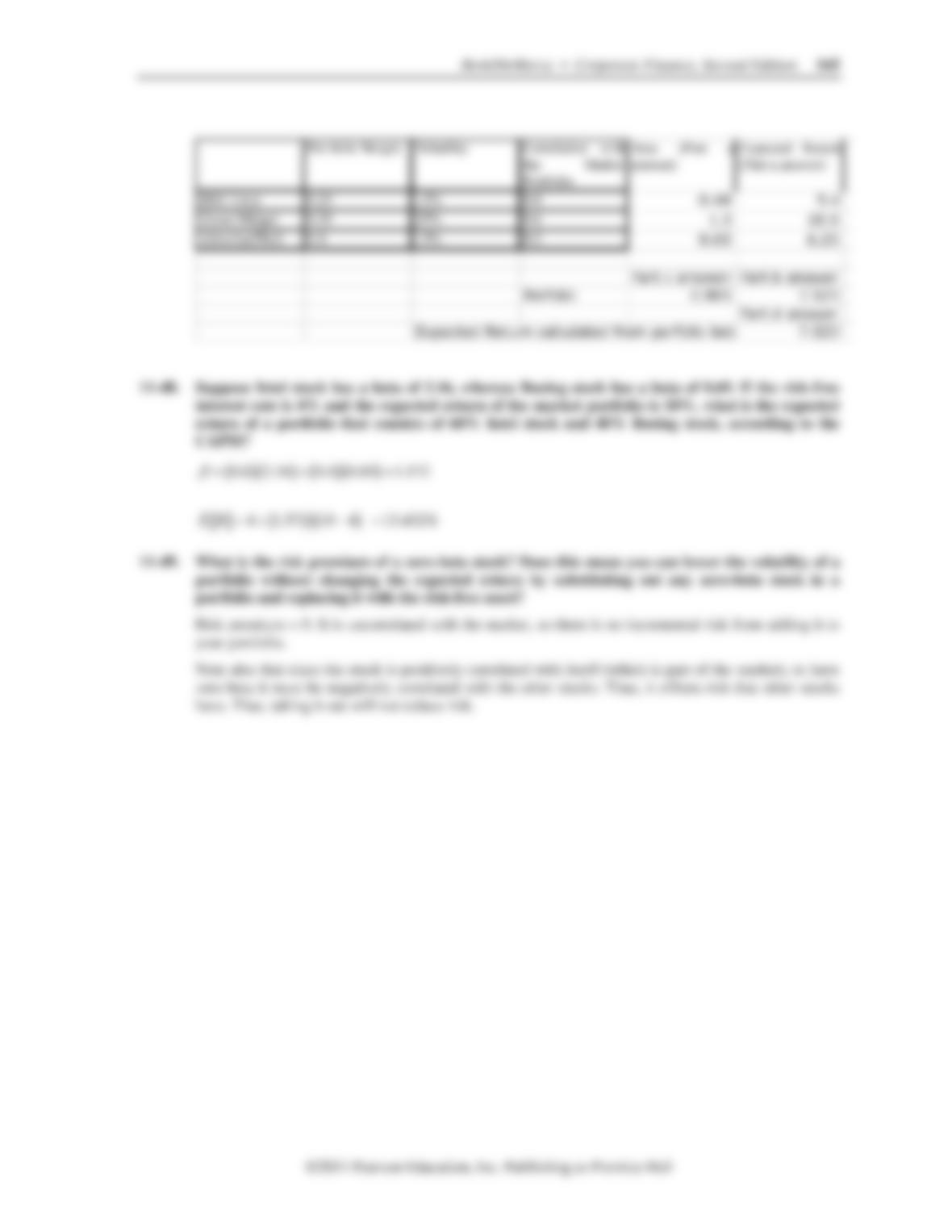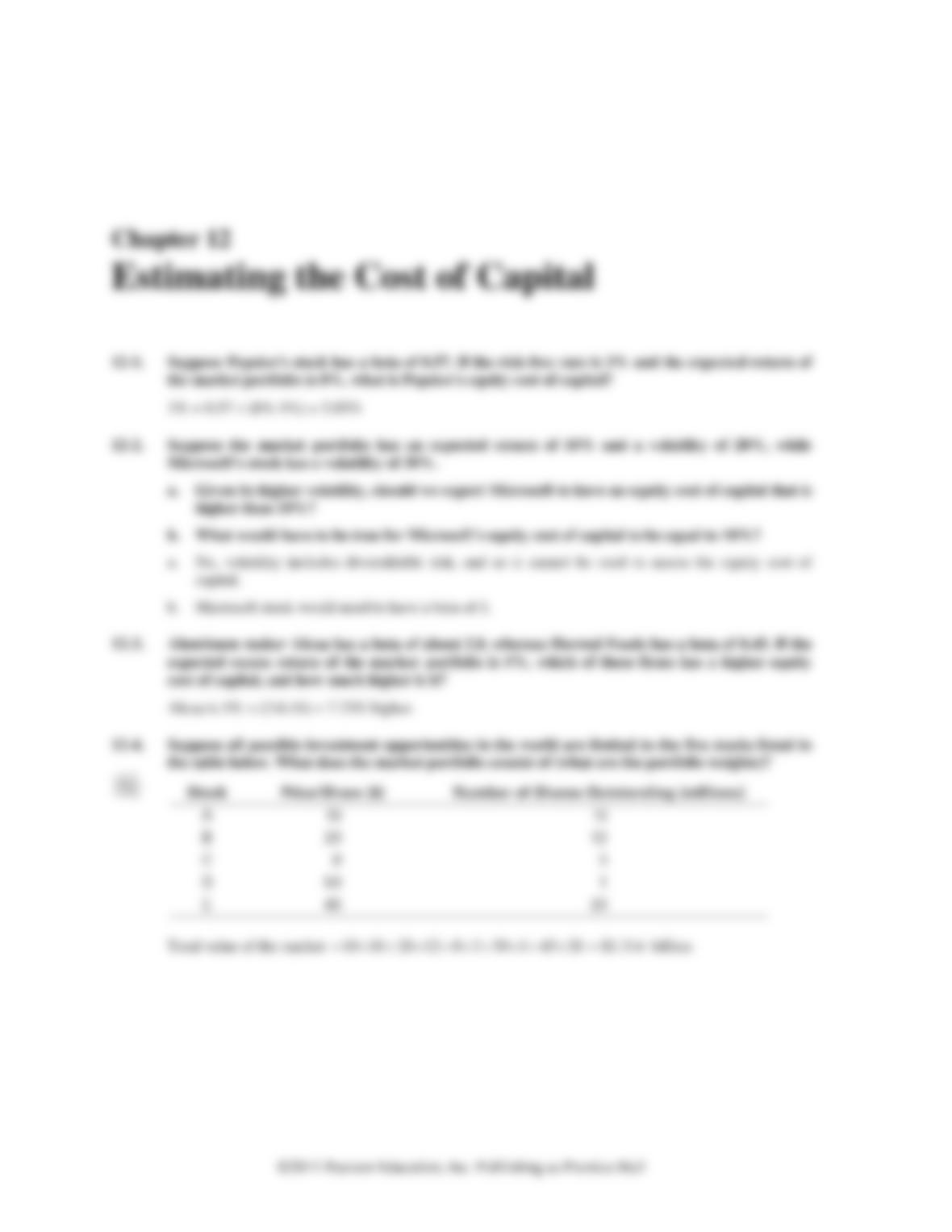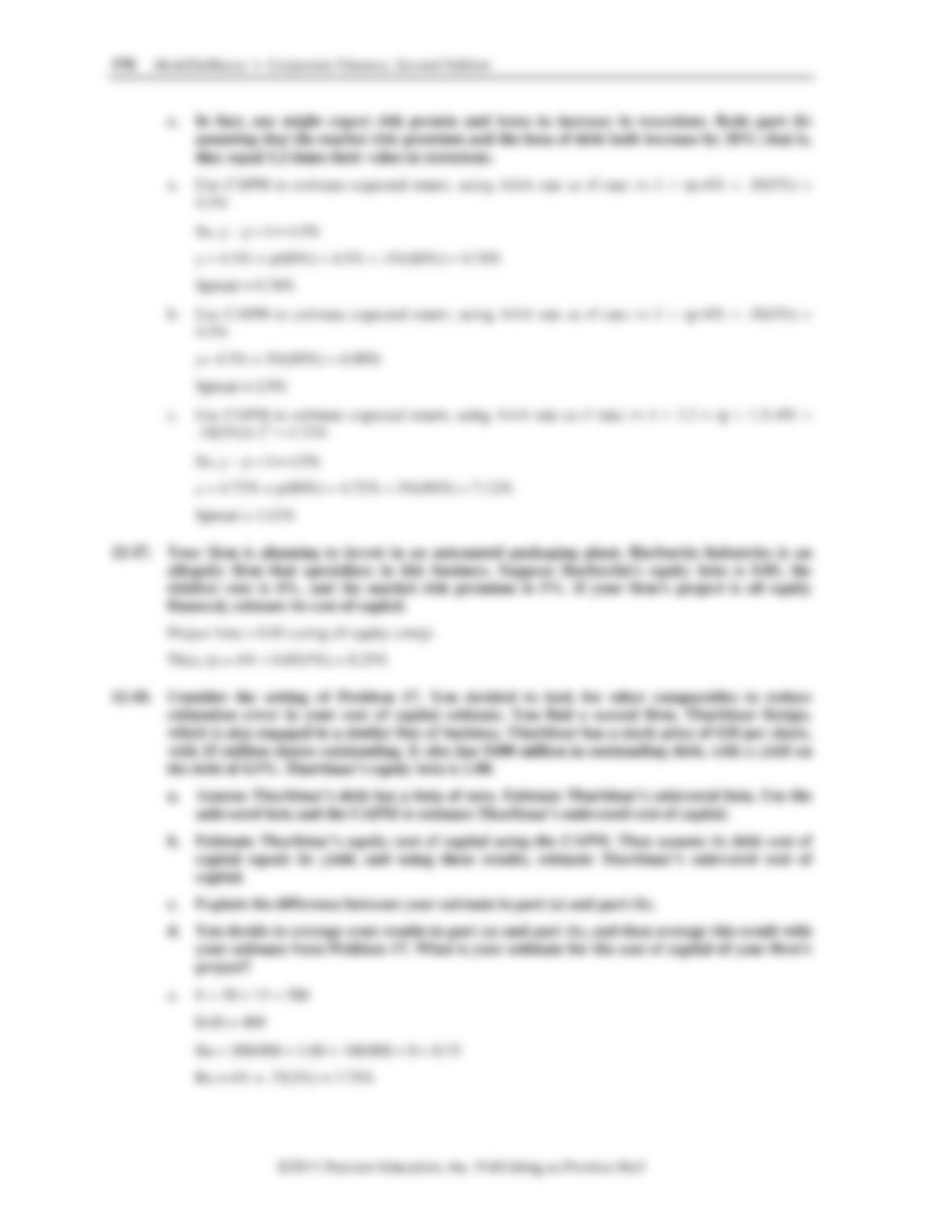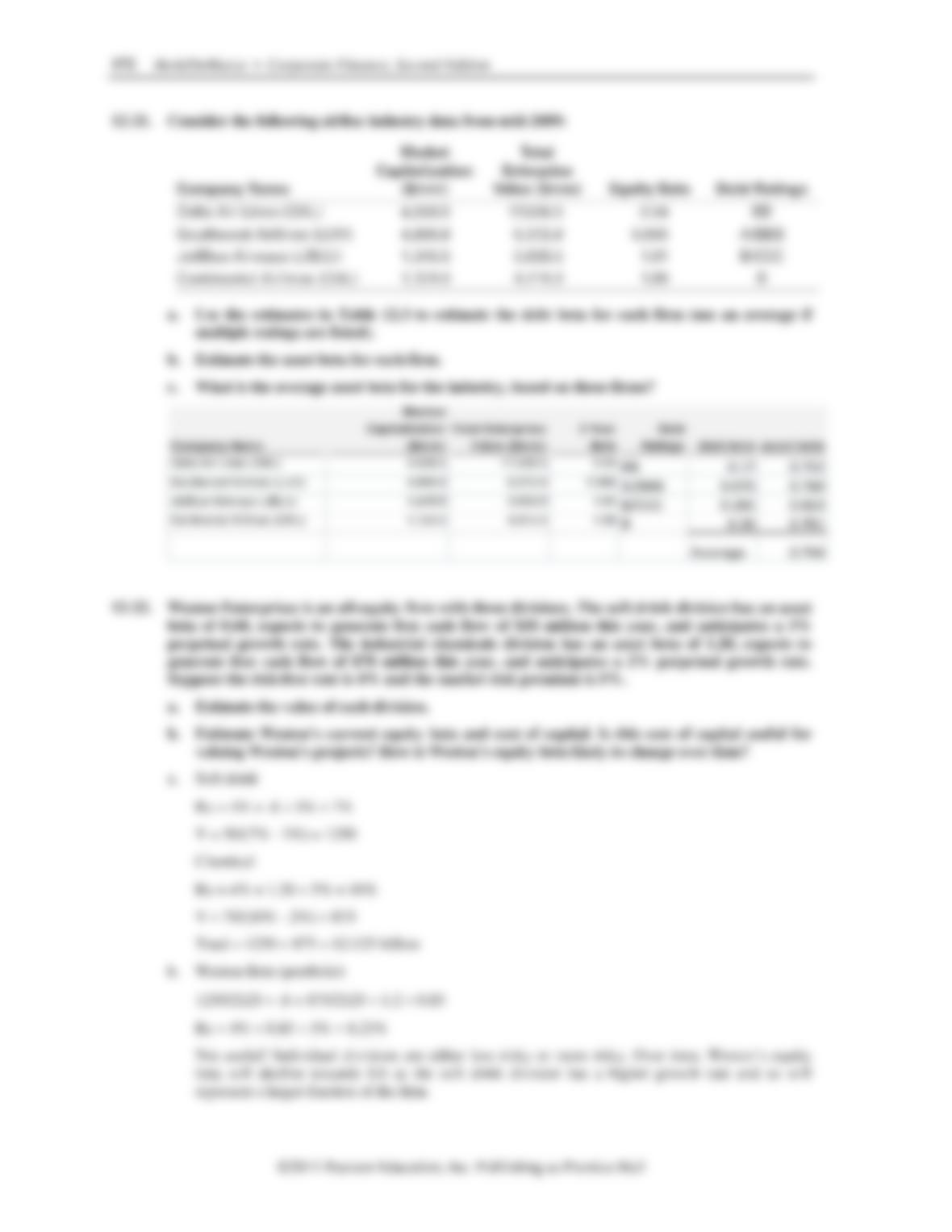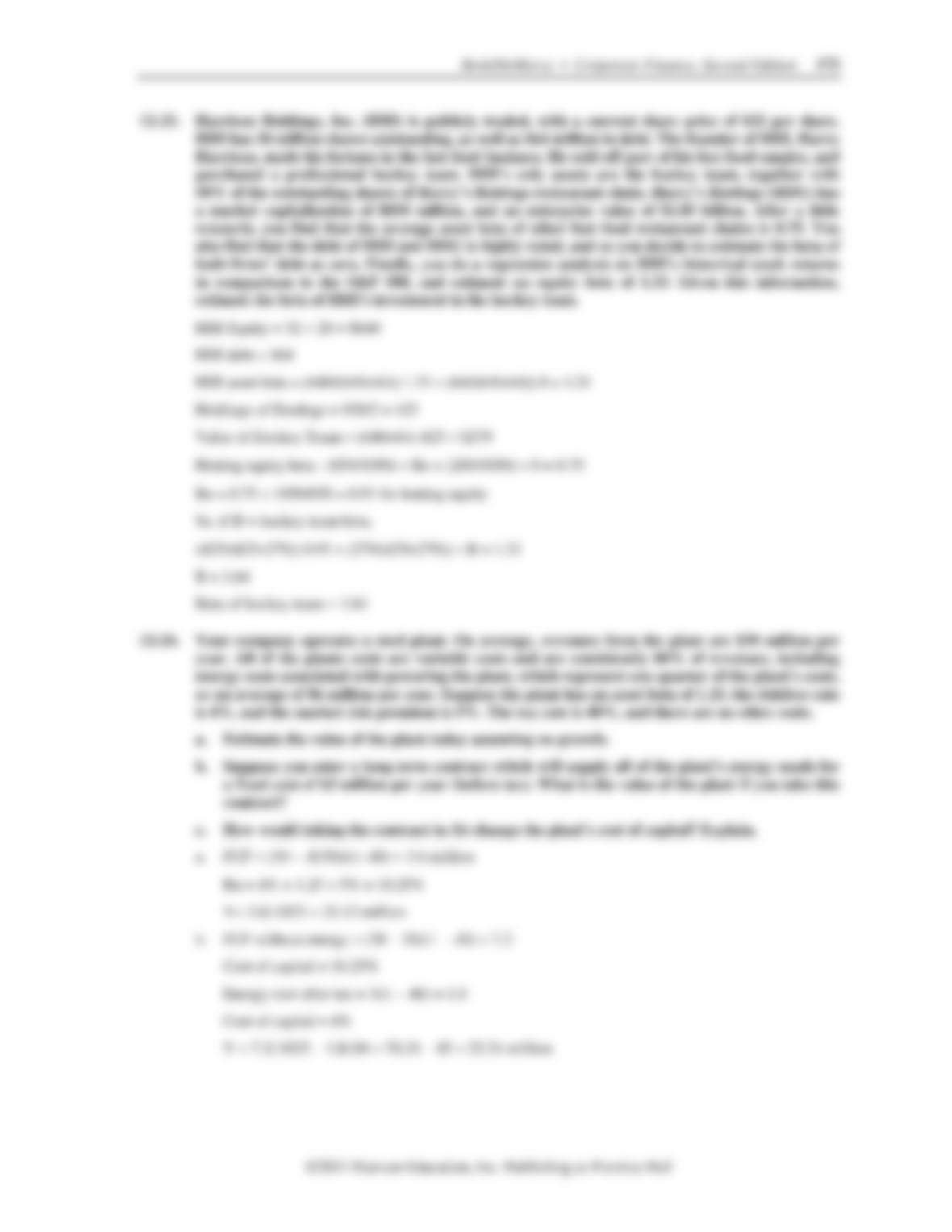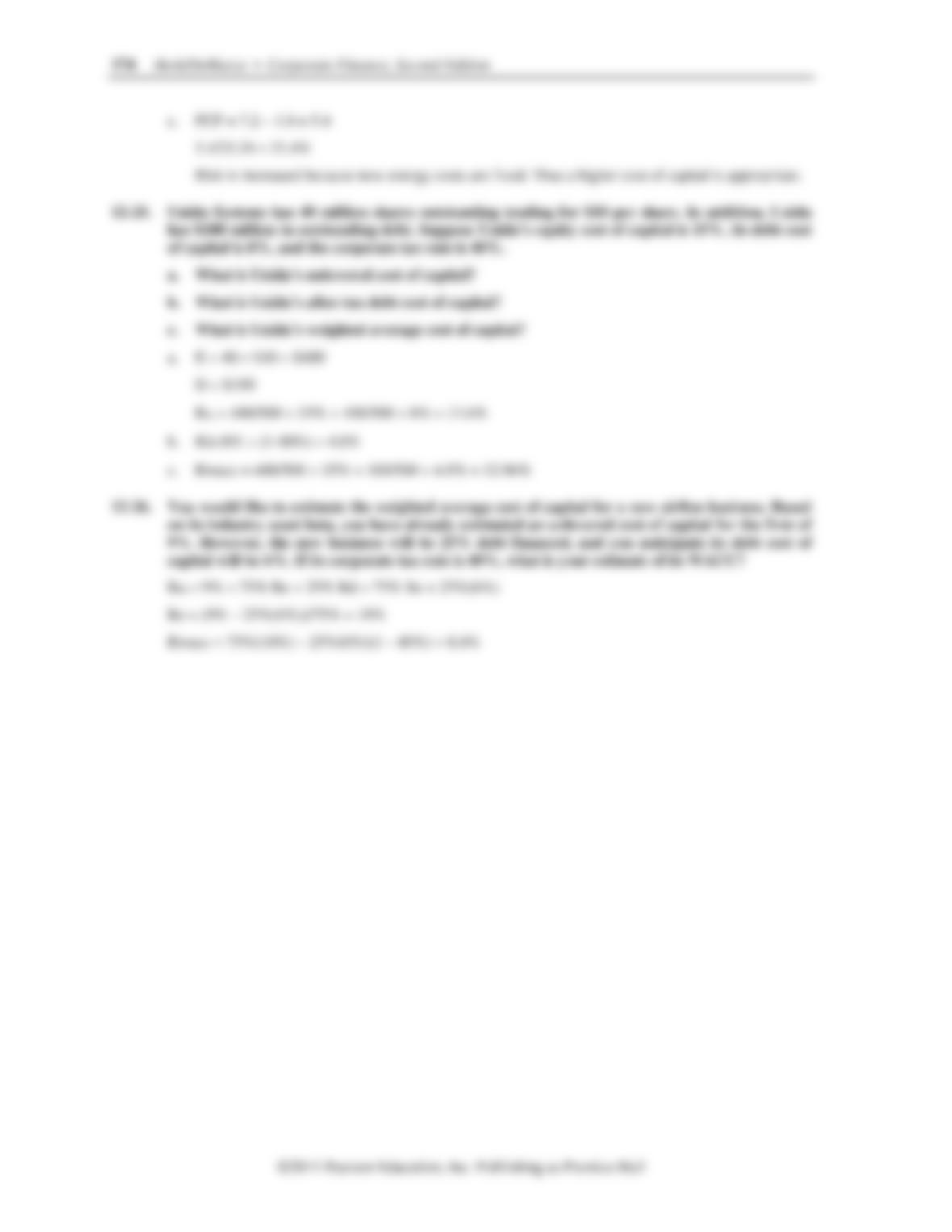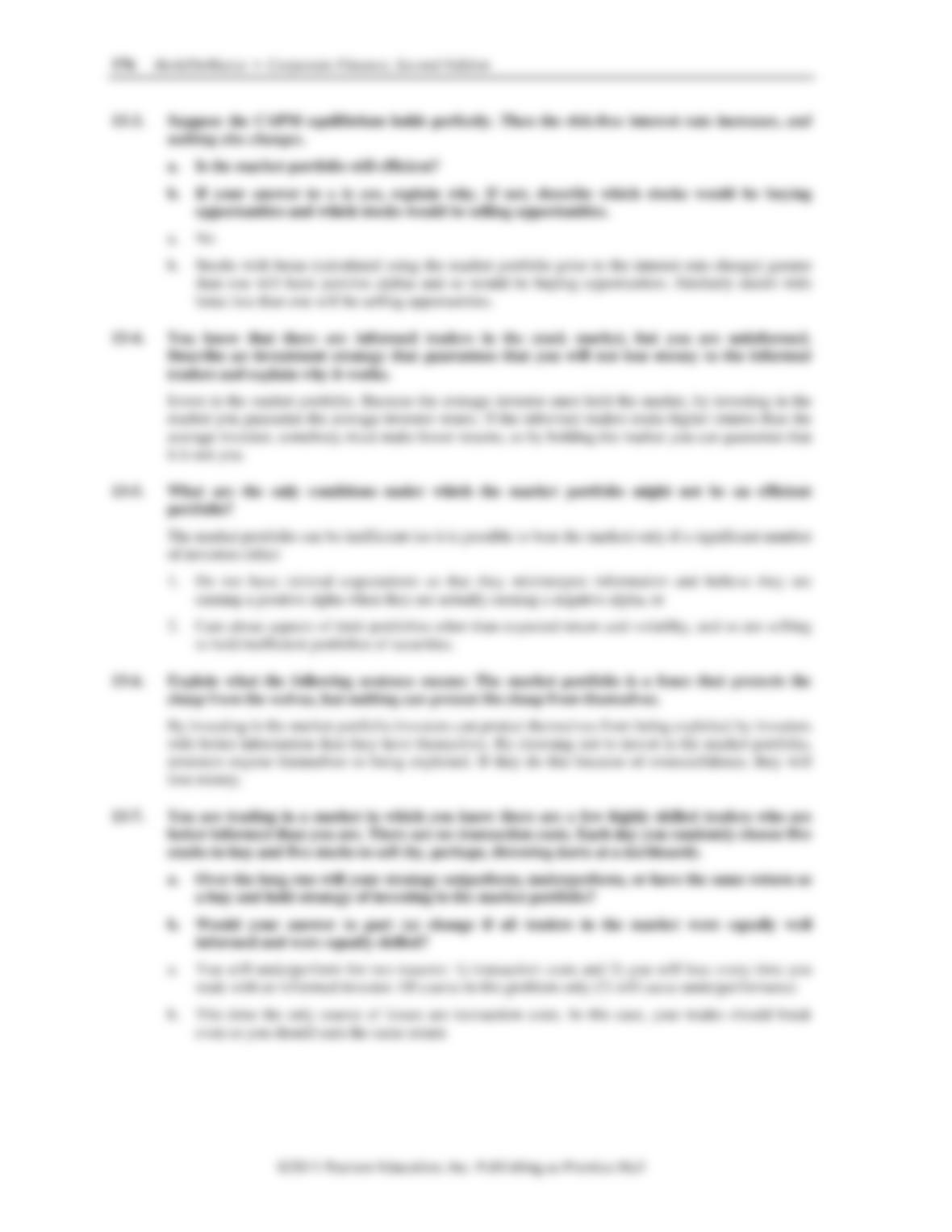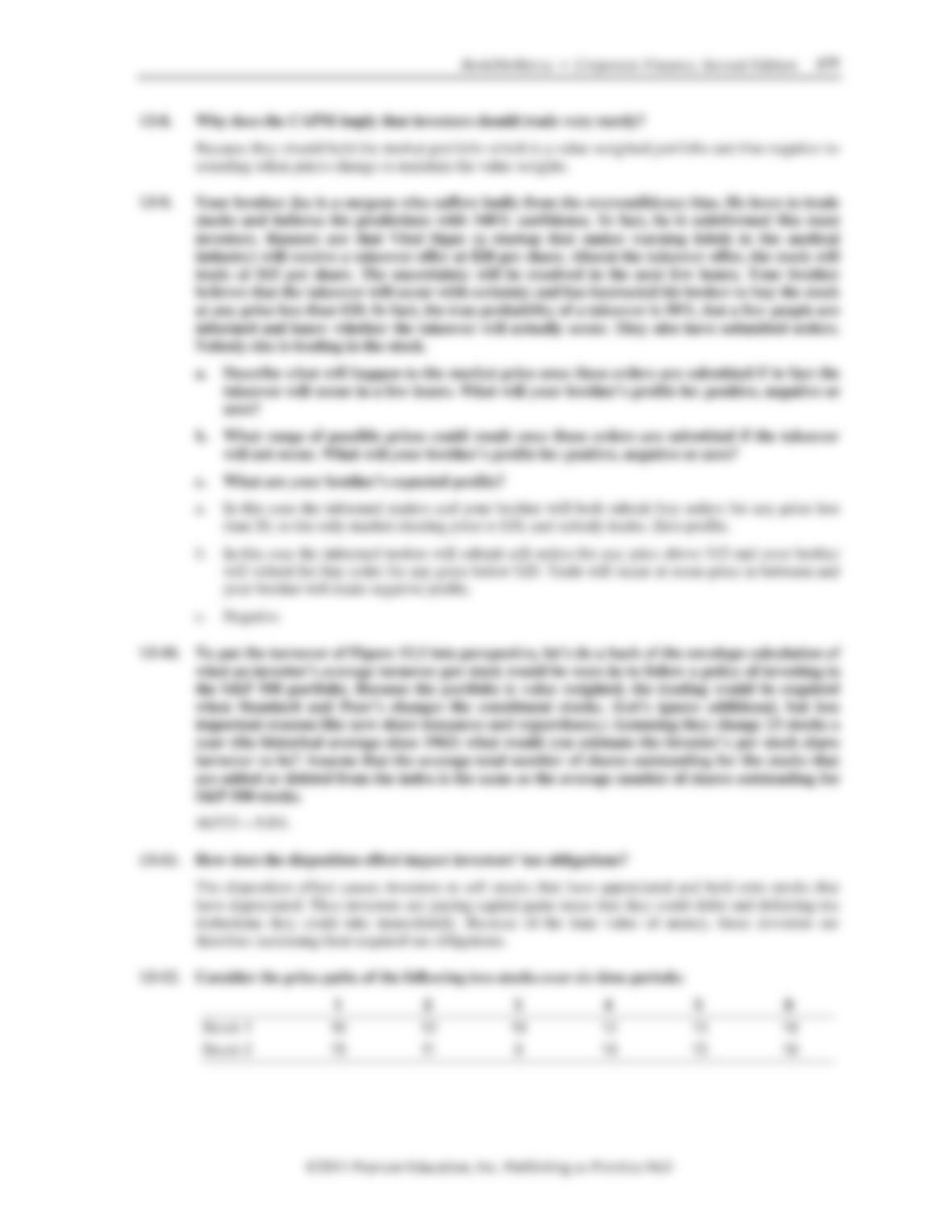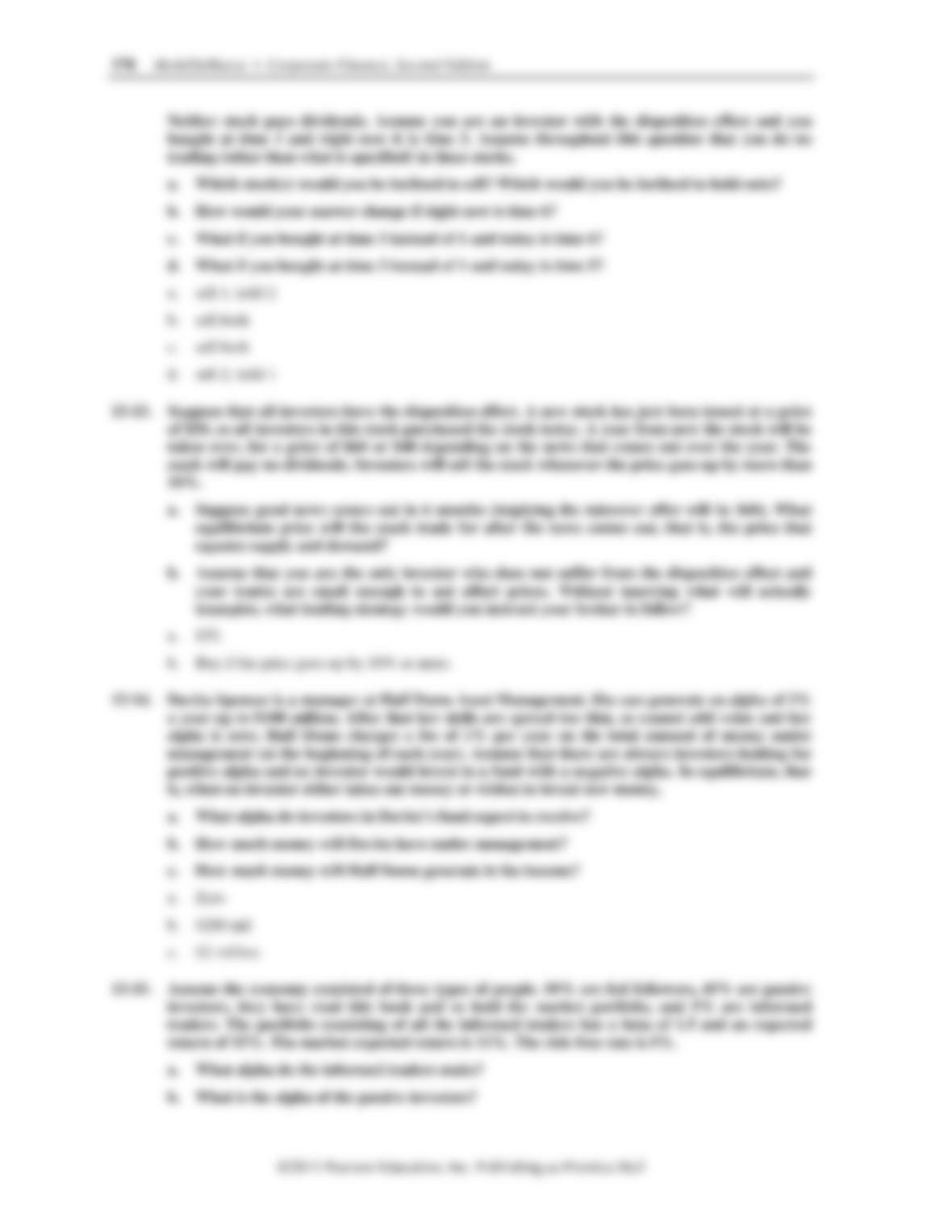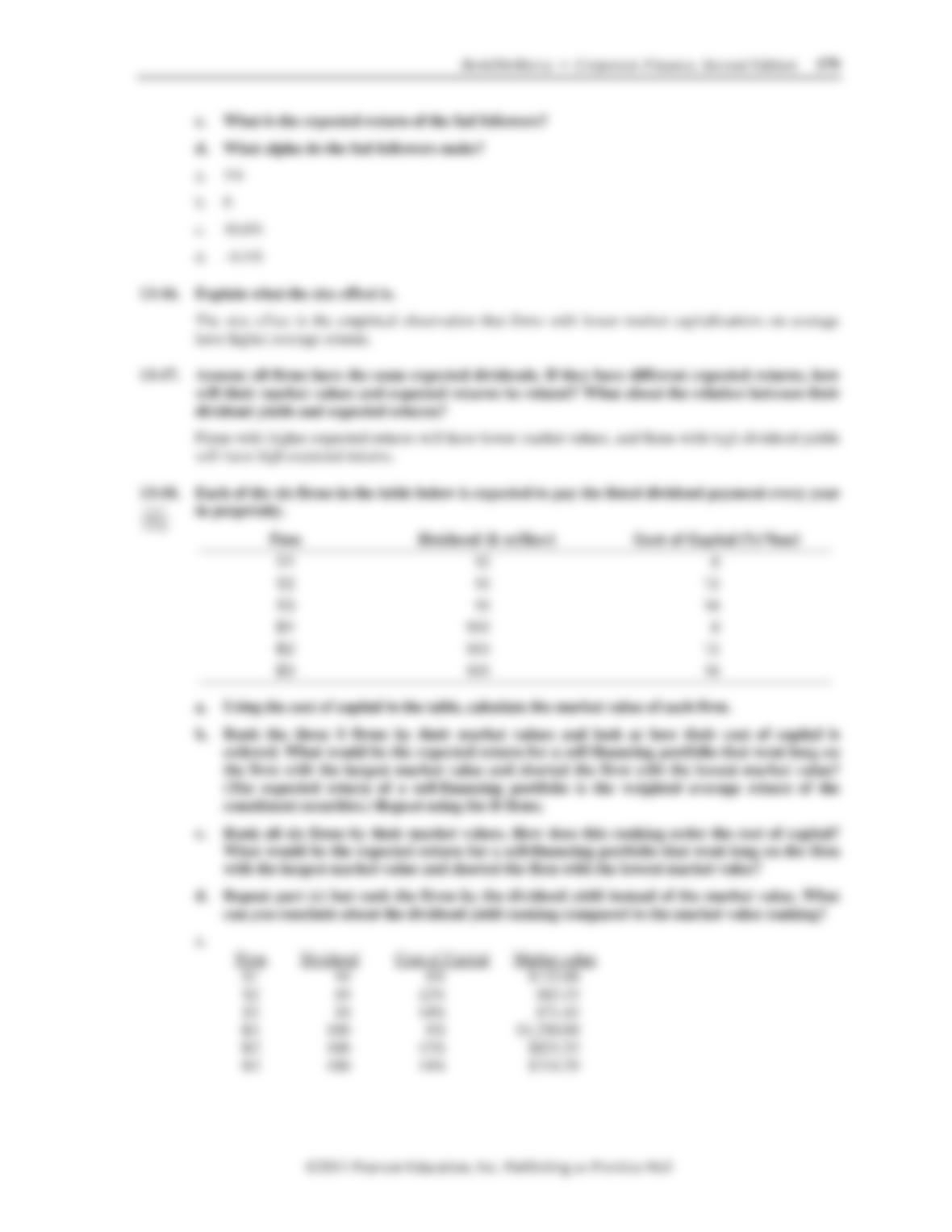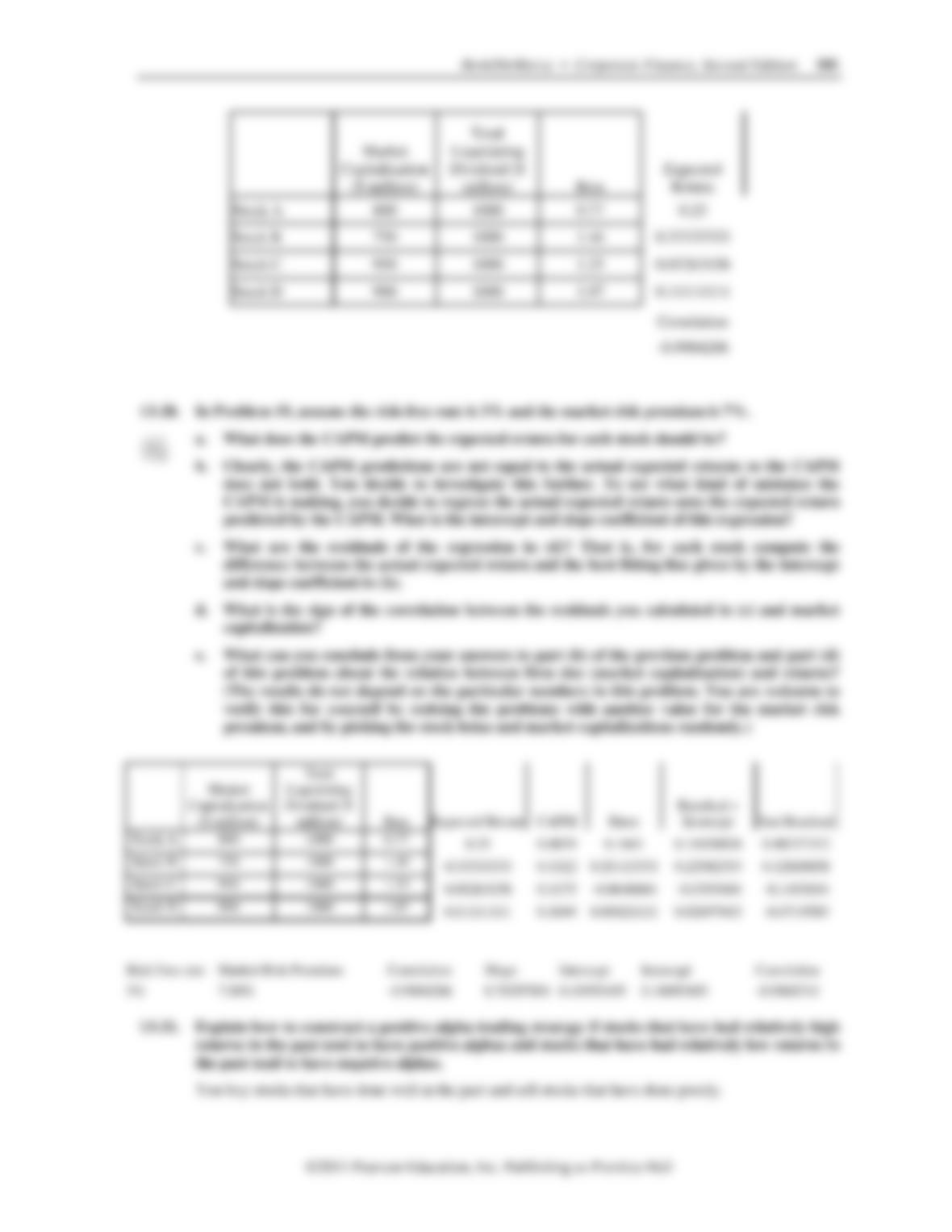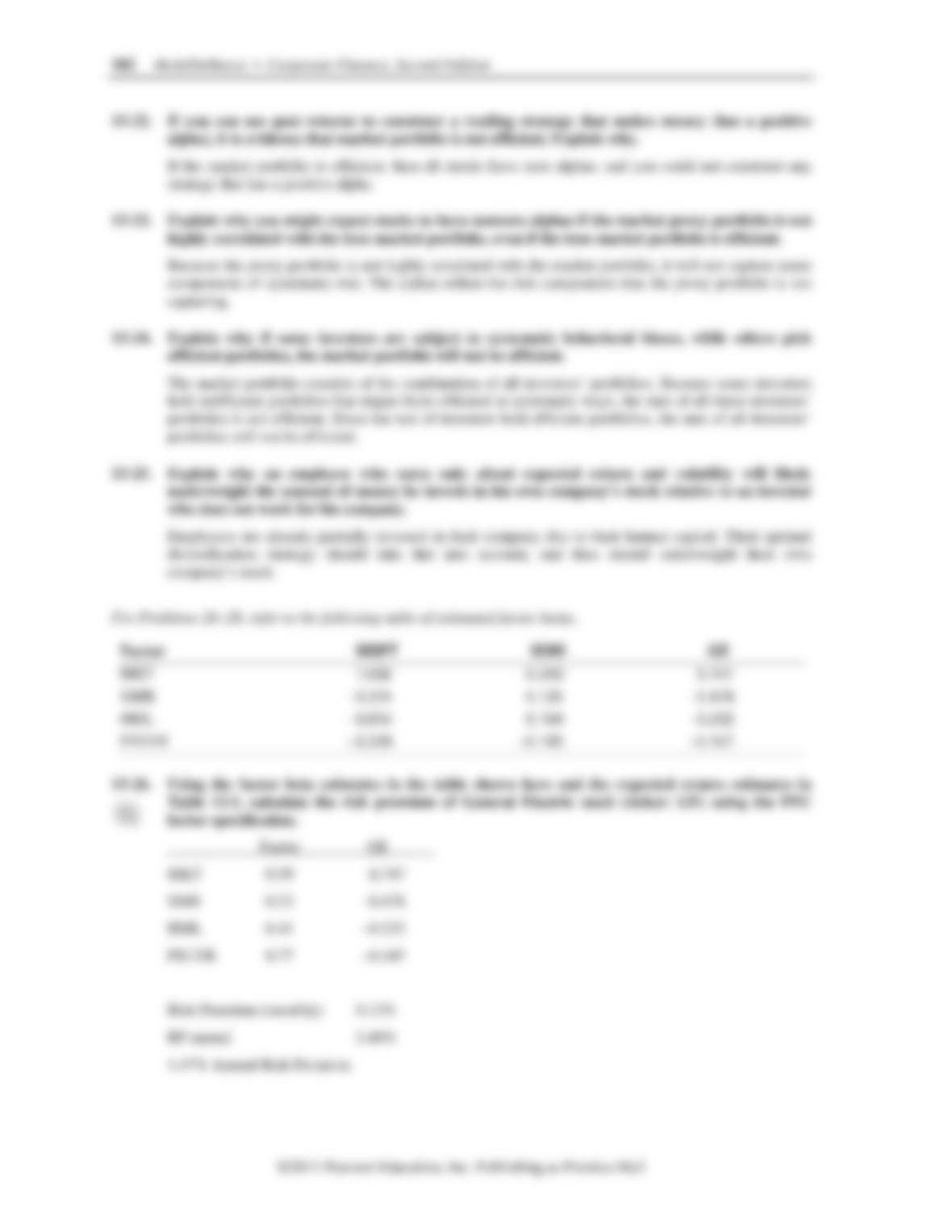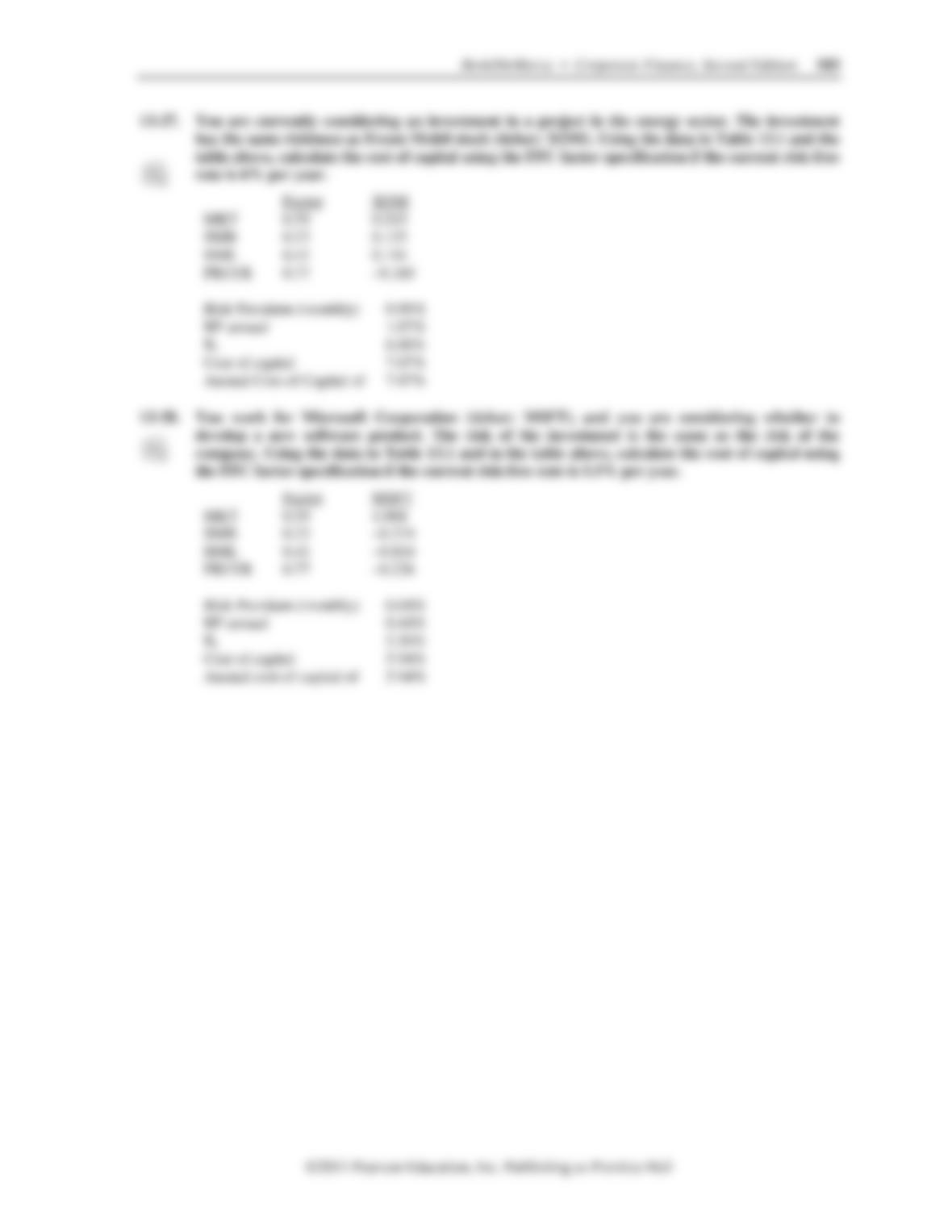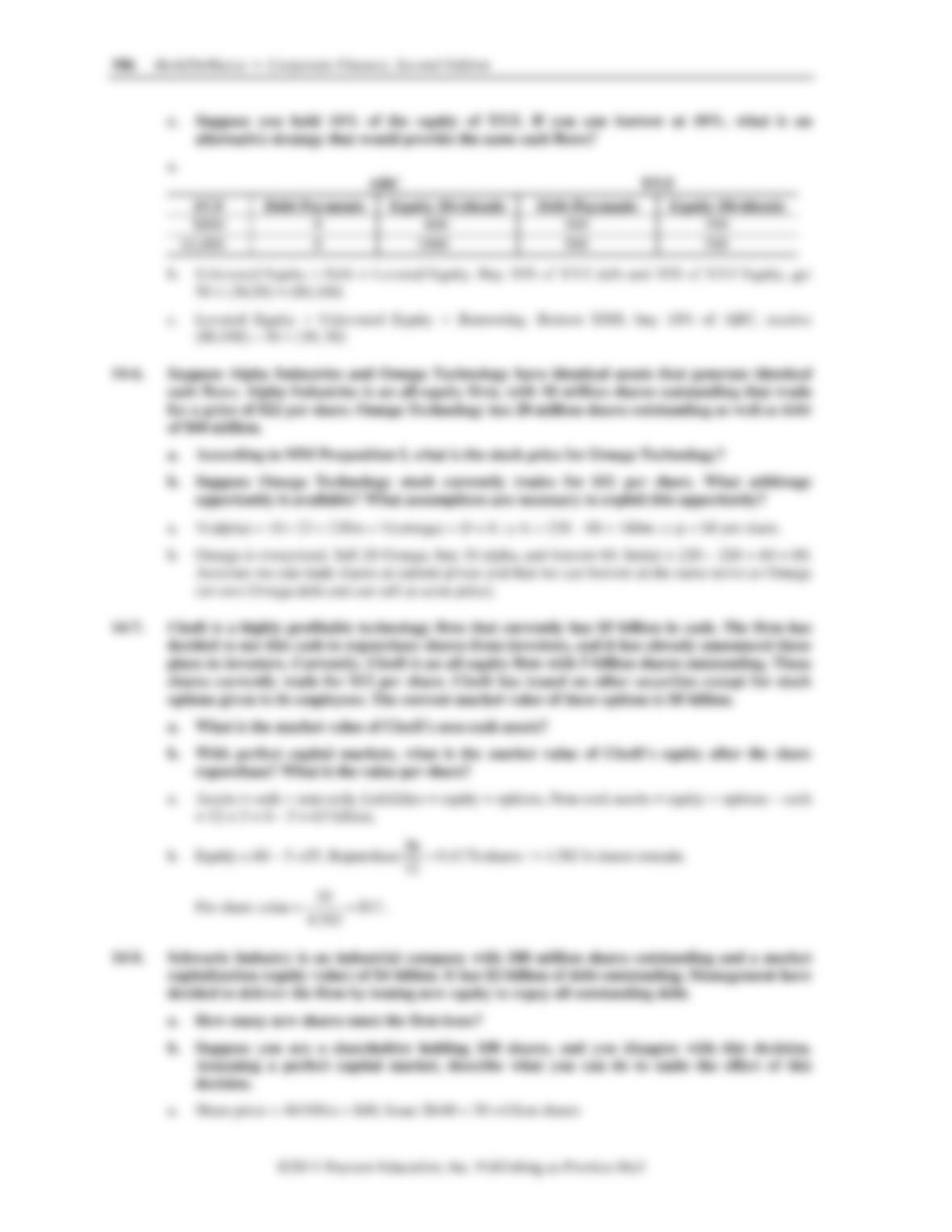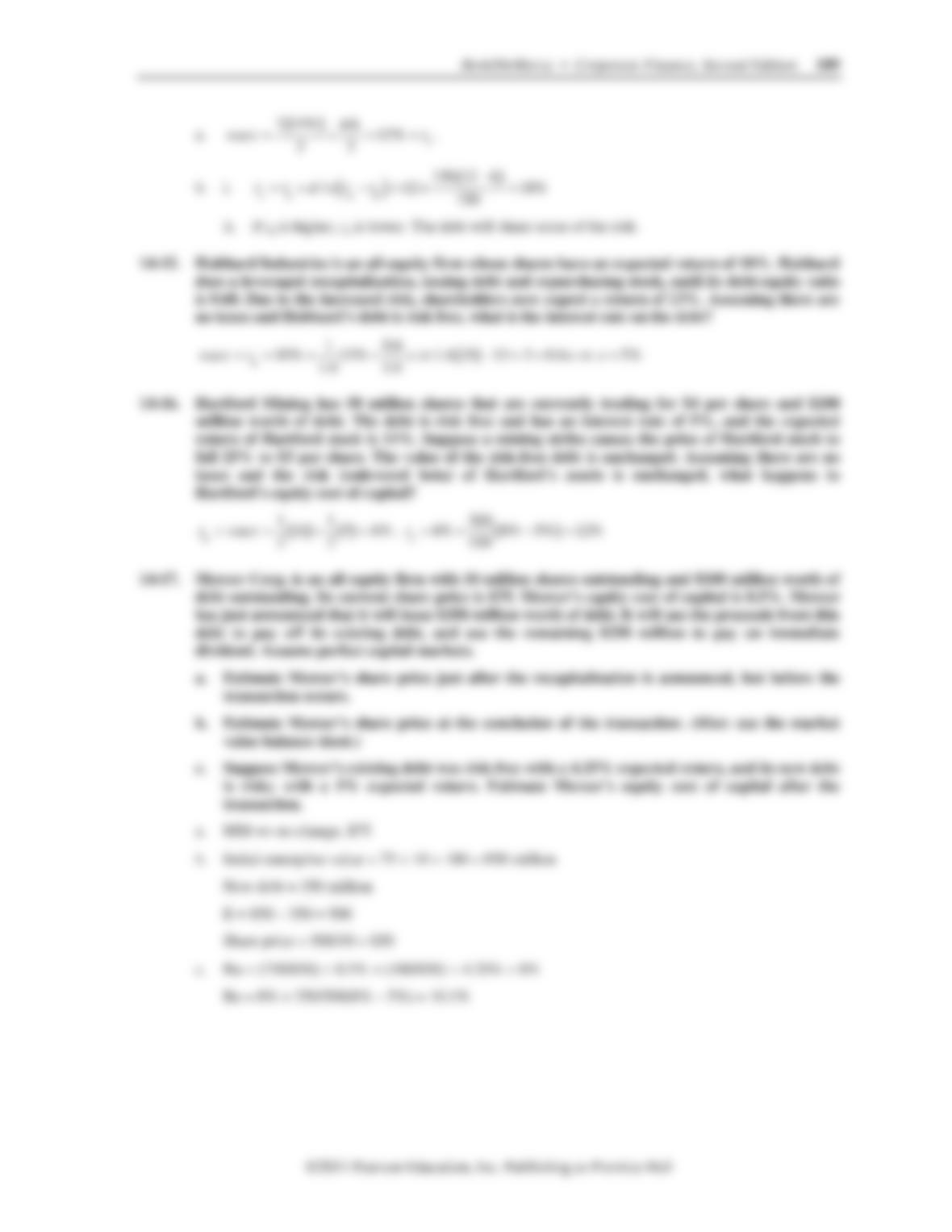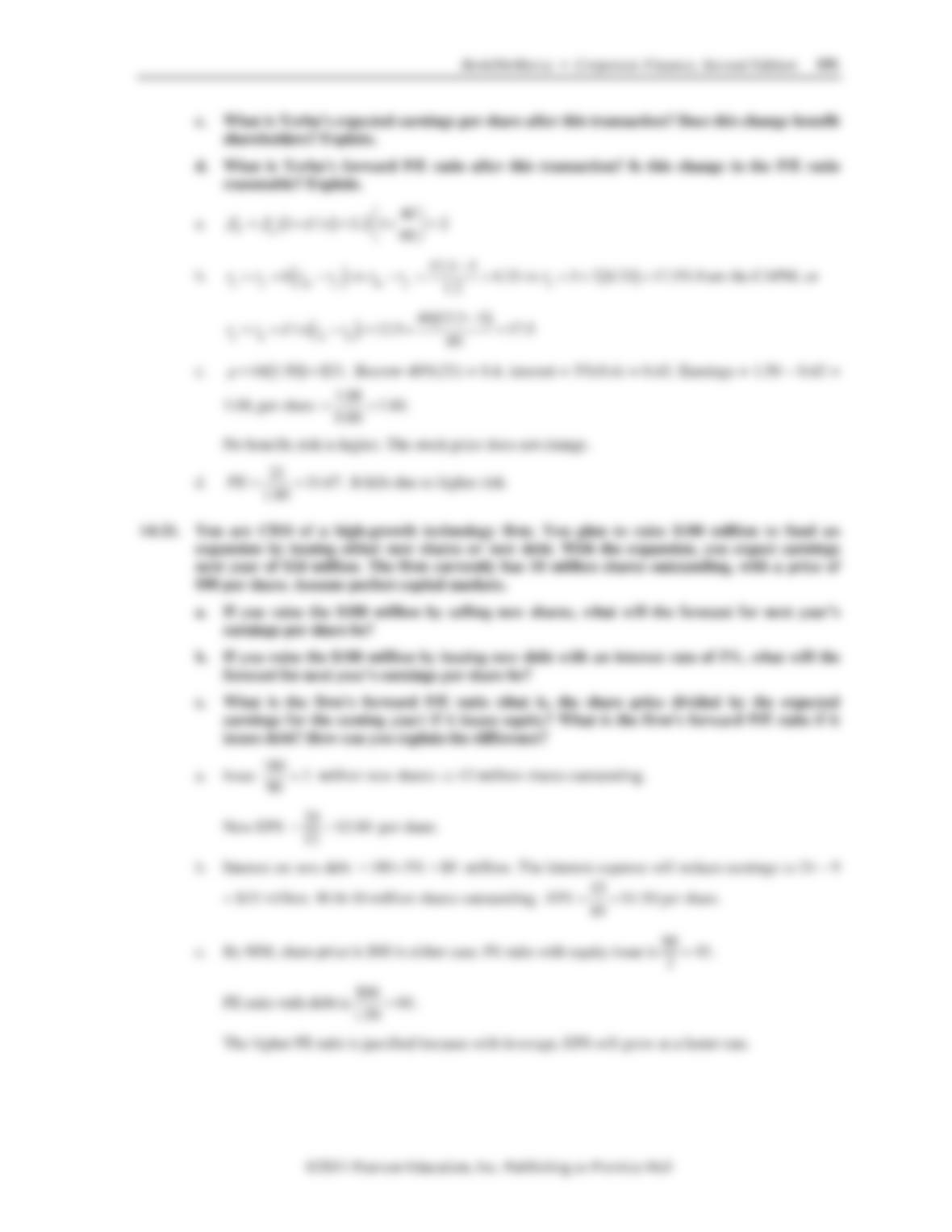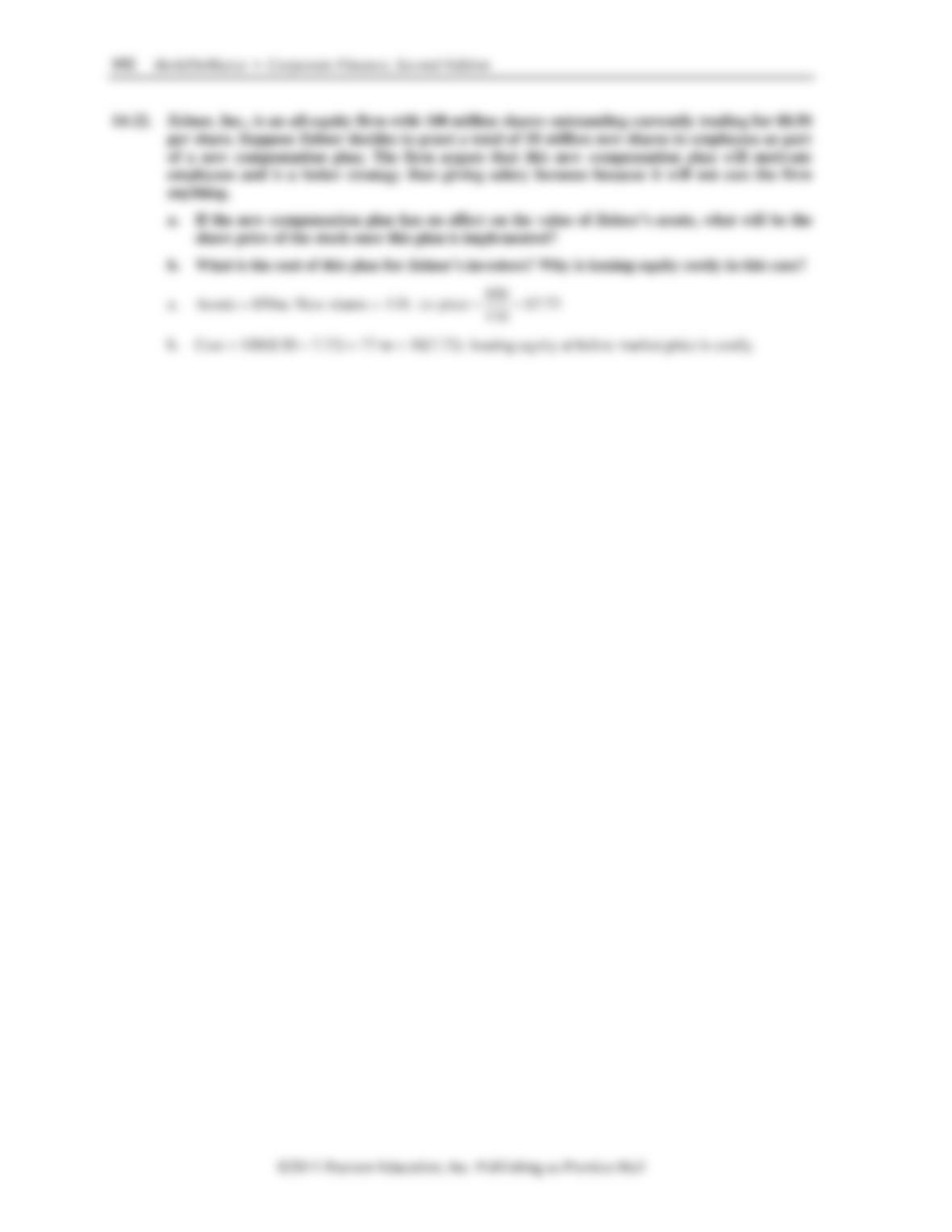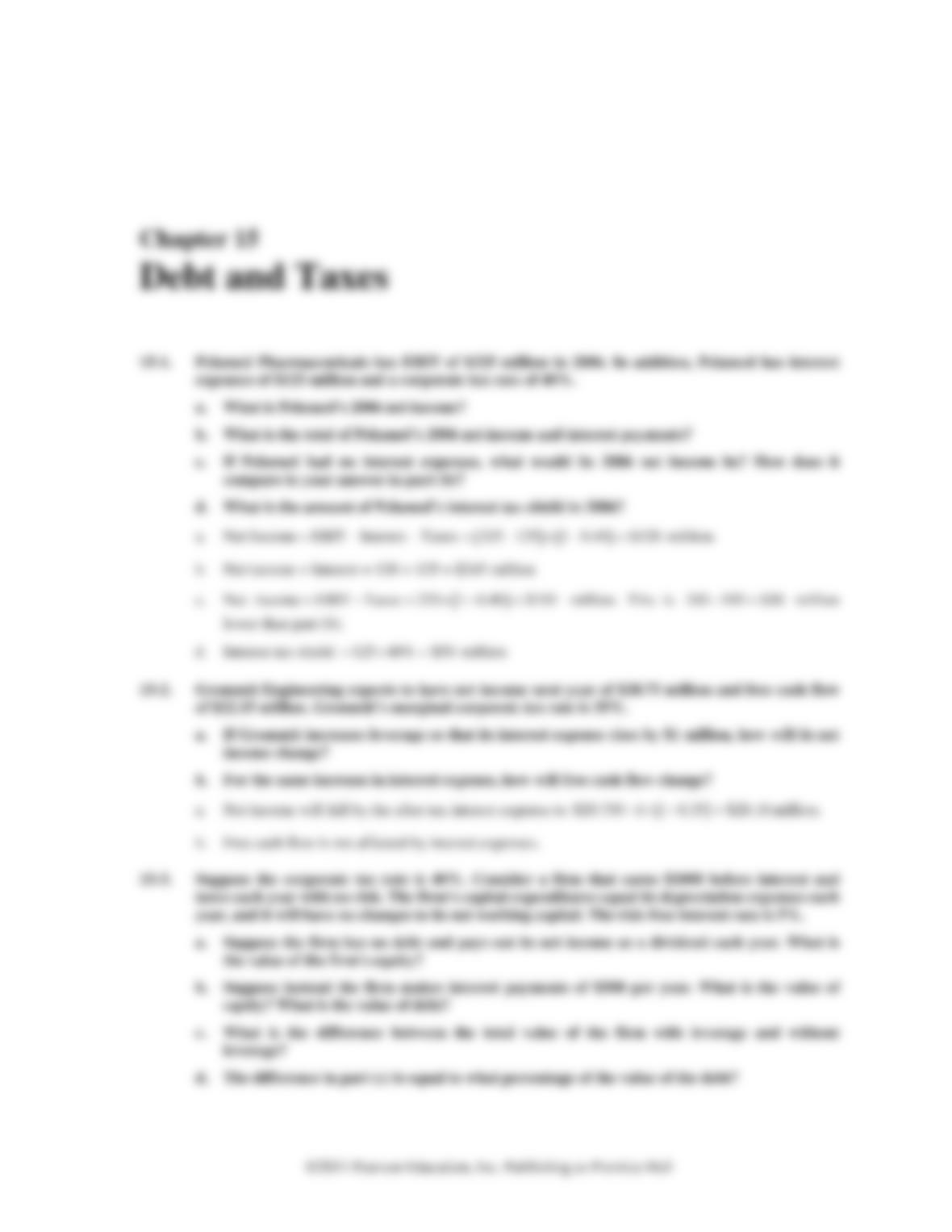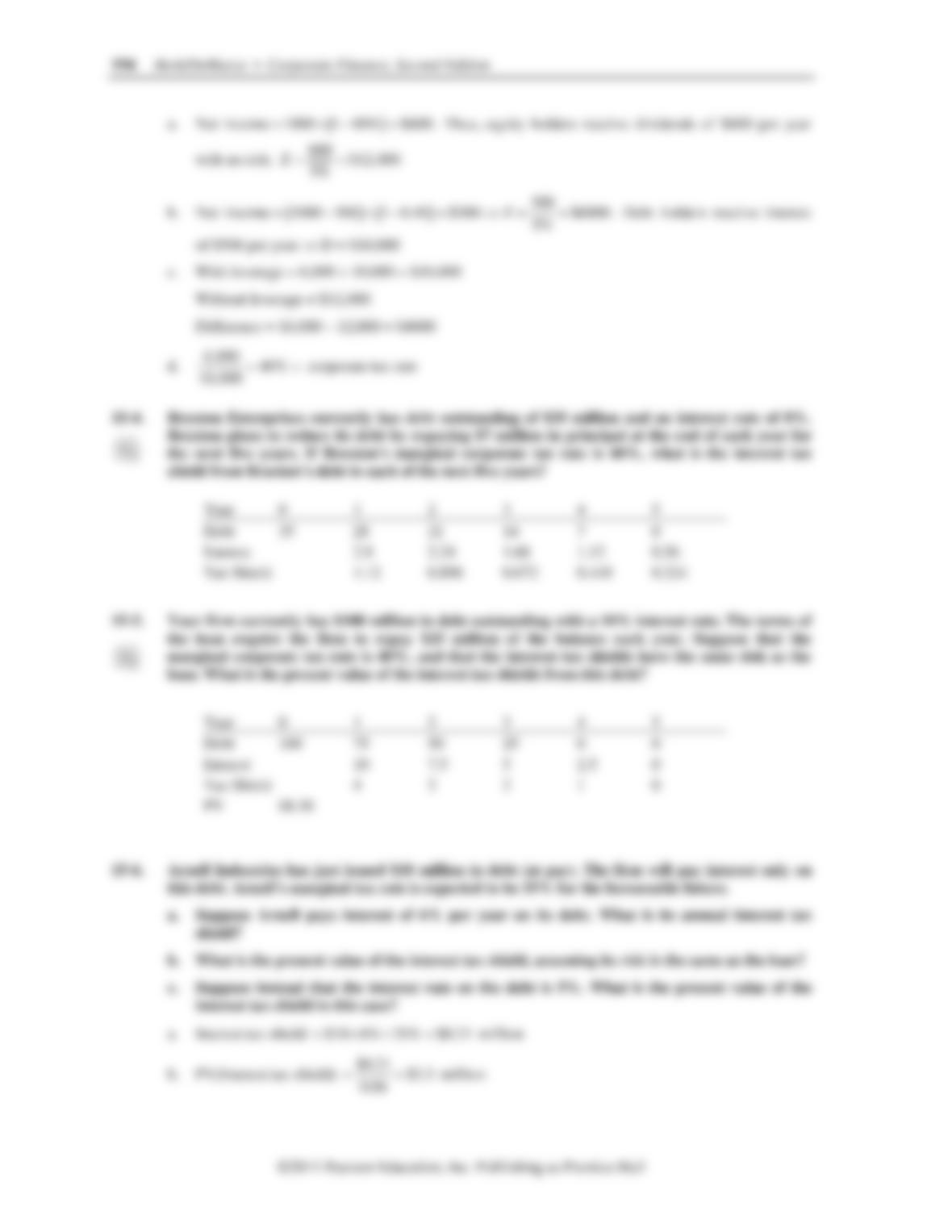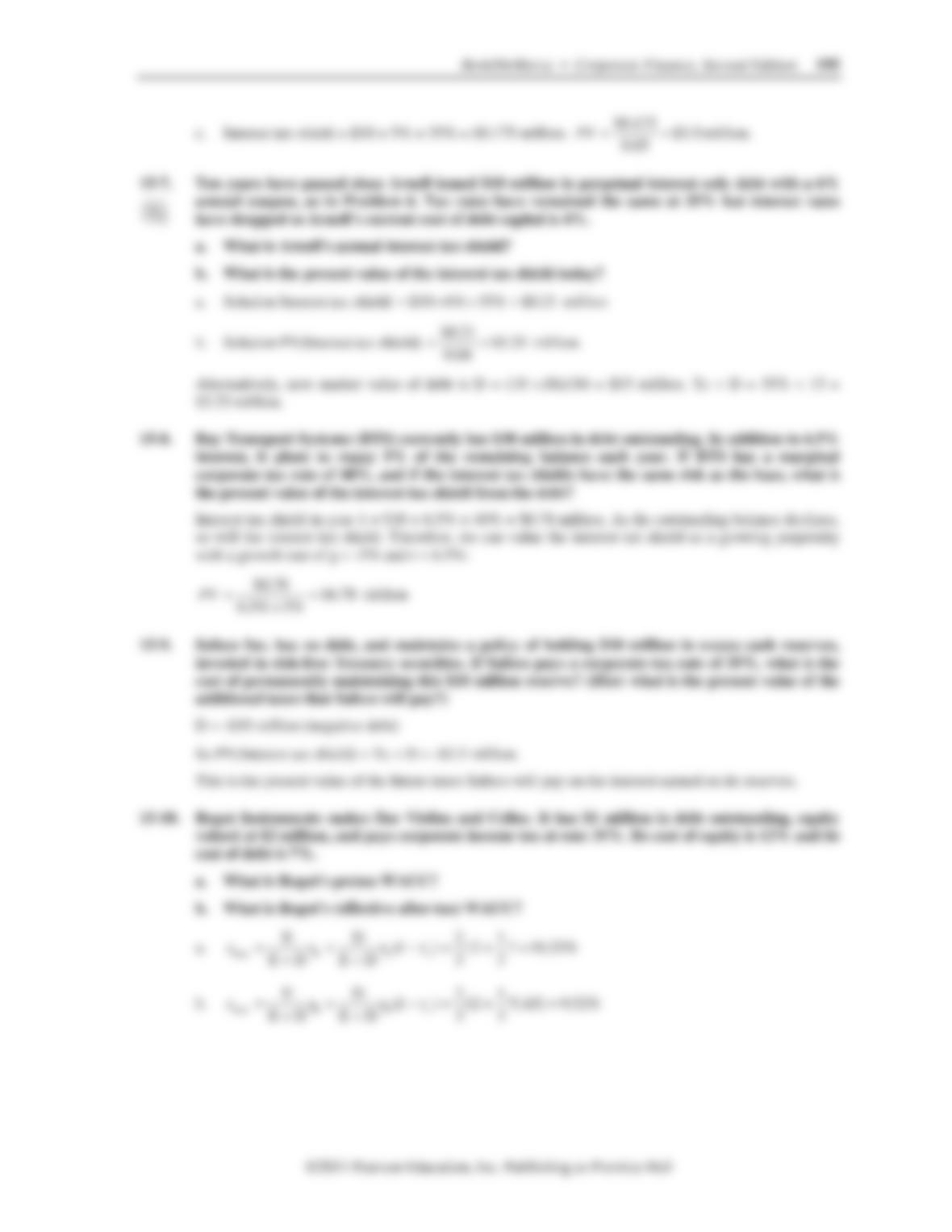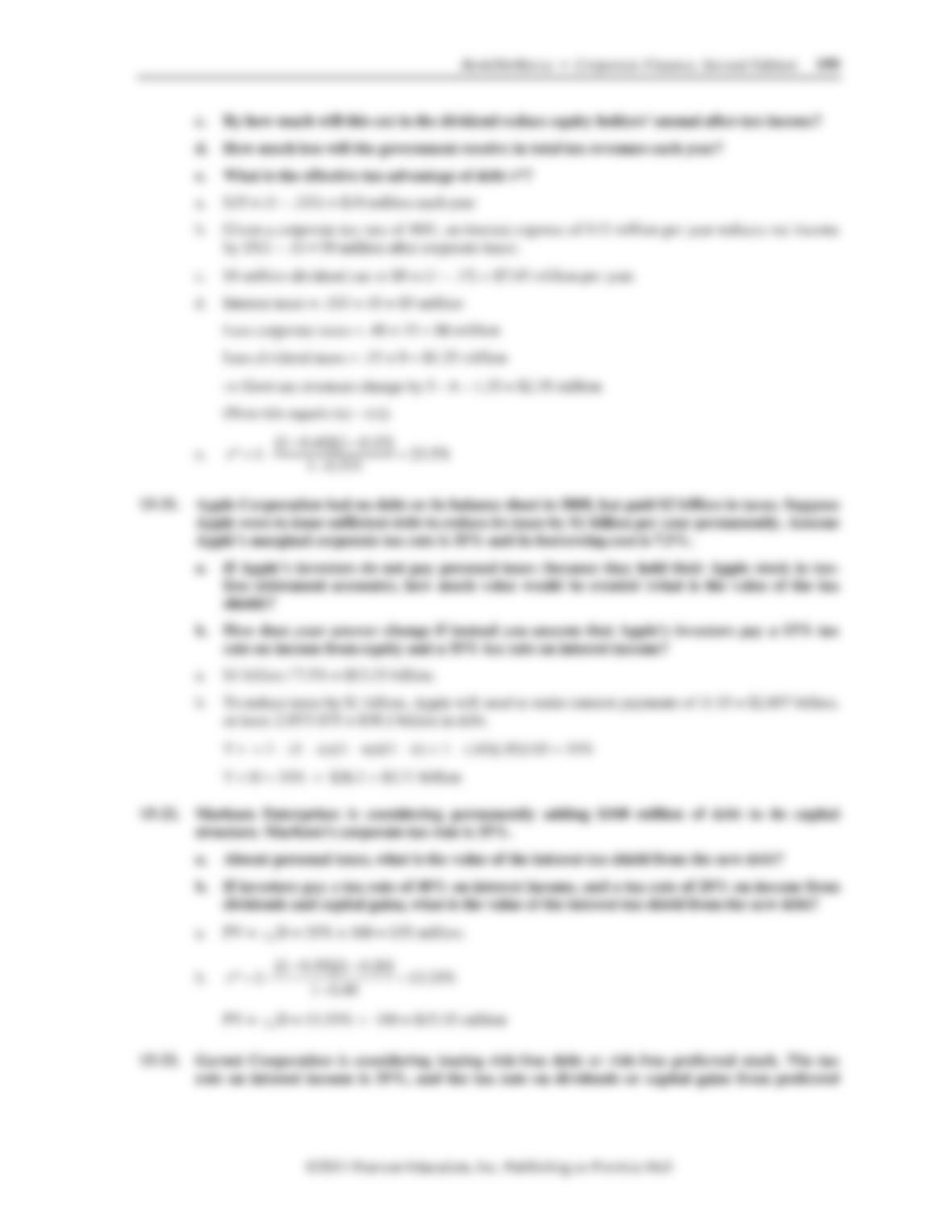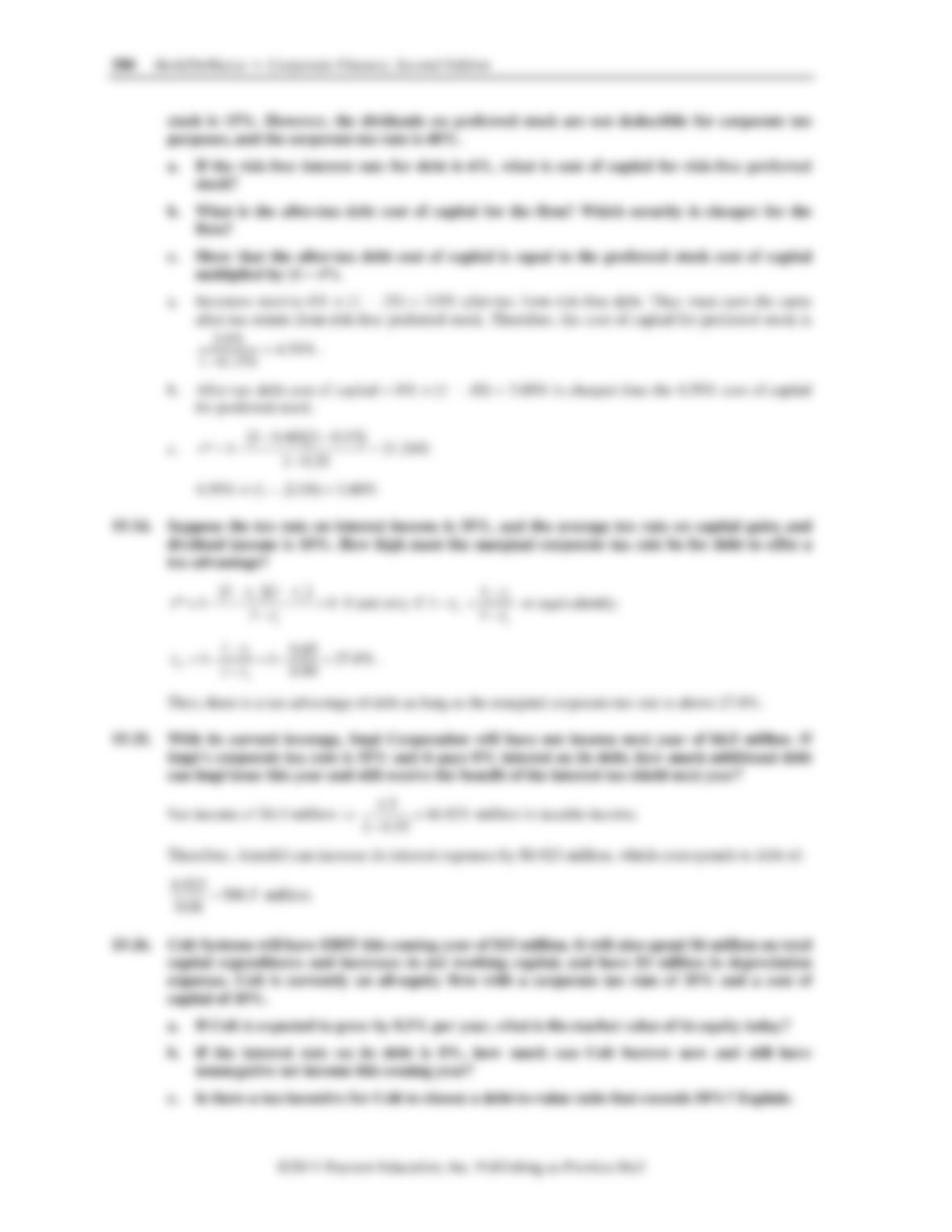
2 Berk/DeMarzo • Corporate Finance, Second Edition
©2011 Pearson Education, Inc. Publishing as Prentice Hall
1-8. You have decided to form a new start-up company developing applications for the iPhone. Give
examples of the three distinct types of financial decisions you will need to make.
As the manager of an iPhone applications developer, you will make three types of financial decisions.
i. You will make investment decisions such as determining which type of iPhone application
projects will offer your company a positive NPV and therefore your company should develop.
ii. You will make the decision on how to fund your iPhone application investments and what mix of
debt and equity your company will have.
iii. You will be responsible for the cash management of your company, ensuring that your company
has the necessary funds to make investments, pay interest on loans, and pay your employees.
1-9. Corporate managers work for the owners of the corporation. Consequently, they should make
decisions that are in the interests of the owners, rather than their own. What strategies are
available to shareholders to help ensure that managers are motivated to act this way?
Shareholders can do the following.
i. Ensure that employees are paid with company stock and/or stock options.
ii. Ensure that underperforming managers are fired.
iii. Write contracts that ensure that the interests of the managers and shareholders are closely aligned.
iv. Mount hostile takeovers.
1-10. Suppose you are considering renting an apartment. You, the renter, can be viewed as an agent
while the company that owns the apartment can be viewed as the principal. What principal-
agent conflicts do you anticipate? Suppose, instead, that you work for the apartment company.
What features would you put into the lease agreement that would give the renter incentives to
take good care of the apartment?
The agent (renter) will not take the same care of the apartment as the principal (owner), because the
renter does not share in the costs of fixing damage to the apartment. To mitigate this problem, having
the renter pay a deposit should motivate the renter to keep damages to a minimum. The deposit forces
the renter to share in the costs of fixing any problems that are caused by the renter.
1-11. You are the CEO of a company and you are considering entering into an agreement to have your
company buy another company. You think the price might be too high, but you will be the CEO
of the combined, much larger company. You know that when the company gets bigger, your pay
and prestige will increase. What is the nature of the agency conflict here and how is it related to
ethical considerations?
There is an ethical dilemma when the CEO of a firm has opposite incentives to those of the
shareholders. In this case, you (as the CEO) have an incentive to potentially overpay for another
company (which would be damaging to your shareholders) because your pay and prestige will
improve.
1-12. Are hostile takeovers necessarily bad for firms or their investors? Explain.
No. They are a way to discipline managers who are not working in the interests of shareholders.
1-13. What is the difference between a public and private corporation?
The shares of a public corporation are traded on an exchange (or "over the counter" in an electronic
trading system) while the shares of a private corporation are not traded on a public exchange.
1-14. Explain why the bid-ask spread is a transaction cost.
Investors always buy at the ask and sell at the bid. Since ask prices always exceed bid prices, investors
“lose” this difference. It is one of the costs of transacting. Since the market makers take the other side
of the trade, they make this difference.
























































































